25 Famous Monuments of Barcelona – Spain’s Top Architectural Gems
Everywhere I turned in Barcelona I saw beautiful buildings. You ask, ‘how is that different from the many beautiful cities in the world?’. Hold that thought until you read about the awe-inspiring landmarks of Barcelona and their brilliant architects.
Barcelona is famous for its Catalan art nouveau (el Modernisme) architecture led by famous architects like Antoni Gaudí, Lluís Domènech i Montaner, Puig i Cadafalch and more. However architectural jewels of Barcelona span from the city’s 2000 year old history. Starting from the Roman times, the Gothic period, amazing modern building and imposing glass structures. But, nothing compares with Catalan’s Modernisme inspired monuments of Barcelona.
Gaudi’s famous buildings are inspired by mother nature and are extraordinarily functional! Each of monument is unique and yet follow the premise of esthetics, charm, character, and function. As we explored and we learned, I was in awe of the genius architects that designed La Sagrada Familia, Casa Mila, Hospital de Sant Pau, Park Güell and many more structures.
Everyone knows that Barcelona is the architectural wonderland but I was blown away by the stories behind the magnificence. In this article me and my fellow travelers and architectural enthusiasts share our favorites.
This comprehensive guide to Barcelona’s architectural gems is organized as follows
Famous Churches of Barcelona
1: La Sagrada Familia – Antoni Gaudí
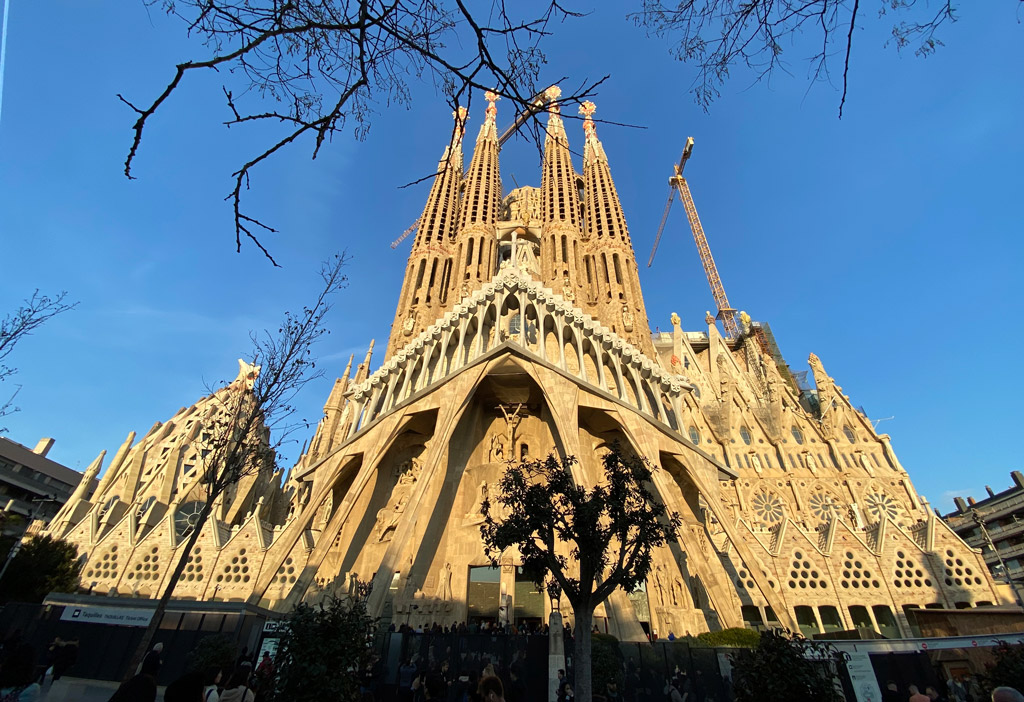
La Sagrada Familia is Antoni Gaudí’s masterpiece that has been under construction since 19 March 1882 and is scheduled to complete is 2026, a century after Gaudi’s death. What an amazing tribute and a way to celebrate the centenary of Gaudí’s death. Gaudi left his master plan and detailed designs, which were damaged in wars, and yet interpreted with modern technologies. Funded by private donors and visitor entrance tickets, this mindblowing architectural treasure will be a heritage for all of humanity.
I’ve visited many of the world’s largest and most exquisite churches and cathedrals, but La Sagrada Familia is my absolute favorite because its architecture touches the heart. It is designed to celebrate nature and learn from the master architect, Mother Nature herself. While the exterior looks like a rib cage protecting the interior, the interior is like a forest of tall trees. Each pillar represents a tall tree and its branches hold up the forest canopy. The windows are designed to let in different colors throughout the day. The morning lets in cool blue colors, while the late afternoon floods La Sagrada Familia with the warm colors of the setting sun.
The exterior has 18 spires and 3 grand facades. You can visit the Nativity and Passion facades by going up on an elevator and returning on the stairs. It gives an up-close look at the architectural elements and representations of natures bounty such as wildlife, plants, flowers, fruit, and vegetables from around the world.
Beyond the main hall are chapels and underground structures. There is a lot to see and absorb. I highly recommend taking a few hours to soak it all in. Also, get the audio guide and listen to the wonderful stories of its creation and all the elements of La Sagrada Familia. If you have time to visit San Pau Hospital, pick a vegan empanada on the short walk there.
Just being there you’ll realize why La Sagrada Familia is Barcelona’s most famous building and most important monument.
Check our picture gallery of La Sagrada Familia.
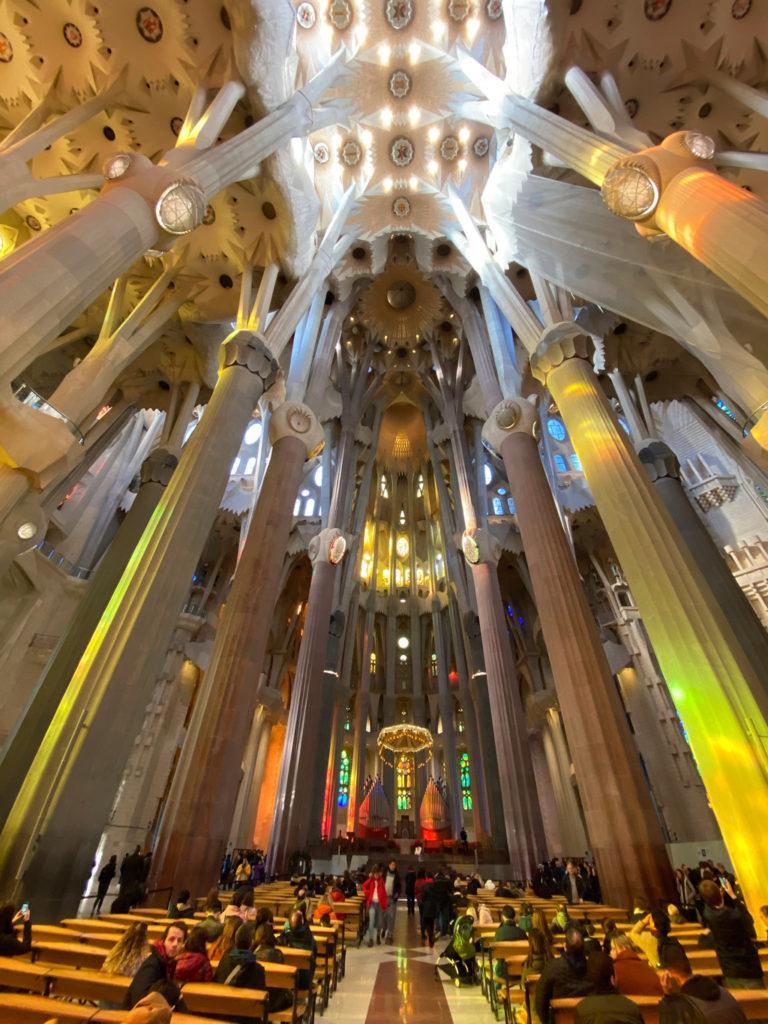
2: Basilica of Santa Maria Del Mar – Berenguer de Montagut
by Wendy of The Nomadic Vegan
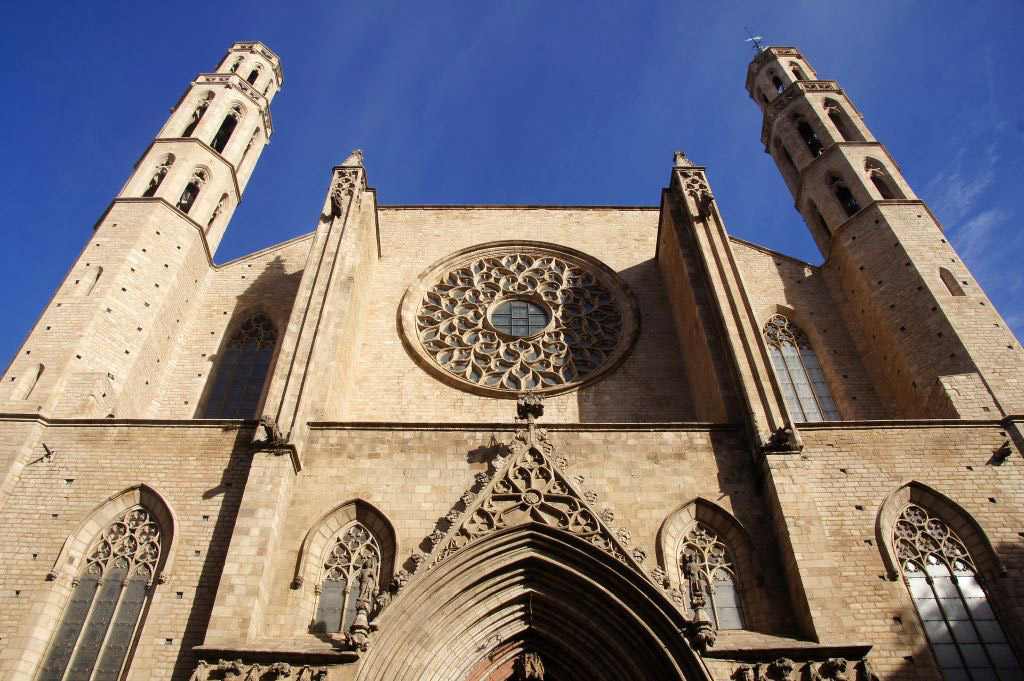
While not quite as famous as the Sagrada Família or the Barcelona Cathedral, the Basilica Santa Maria del Mar is nonetheless one of the most outstanding examples of Catalan Gothic architecture. The original incarnation of the basilica was built in 998 AD. However, the one we see today dates to the 14th century when Catalonia was at its prime as a maritime and mercantile power. The basilica was designed by two local architects, Berenguer de Montagut and Ramón Despuig, and features a beautiful rose window flanked by two octagonal towers.
Due to the narrow streets surrounding the basilica, it can be difficult to capture in photos. The best vantage points are Fossar de les Moreres and Plaça de Santa Maria. It’s a popular venue for weddings and also for concerts, thanks to its incredible acoustics. Be sure to look up at the keystones of the ceiling vaults, which depict images such as the birth of Jesus and the crowning of Mary. These were restored not too long ago and are once again brightly colored.
You can visit the basilica for free on most days, but it’s worth paying 8.50 euros for a guided tour of the towers and rooftops. This is the only way to gain access to the basilica’s three rooftop terraces, where you’ll have amazing views over the La Ribera neighborhood. And of course, you’ll learn much more about the history of the church this way too. There’s also a longer tour at dusk that allows you to enjoy the church leisurely without the crowds. You could combine this tour with a meal at the nearby CatBar, one of the most popular vegan restaurants in Barcelona. Tours are given in Spanish, Catalan, and English and are best booked in advance online.
Find Wendy on Instagram @nomadic_vegan
3: Temple of the Sacred Heart of Jesus at Tibidabo – Enric Sagnier
by Mel of Raw Mal Roams
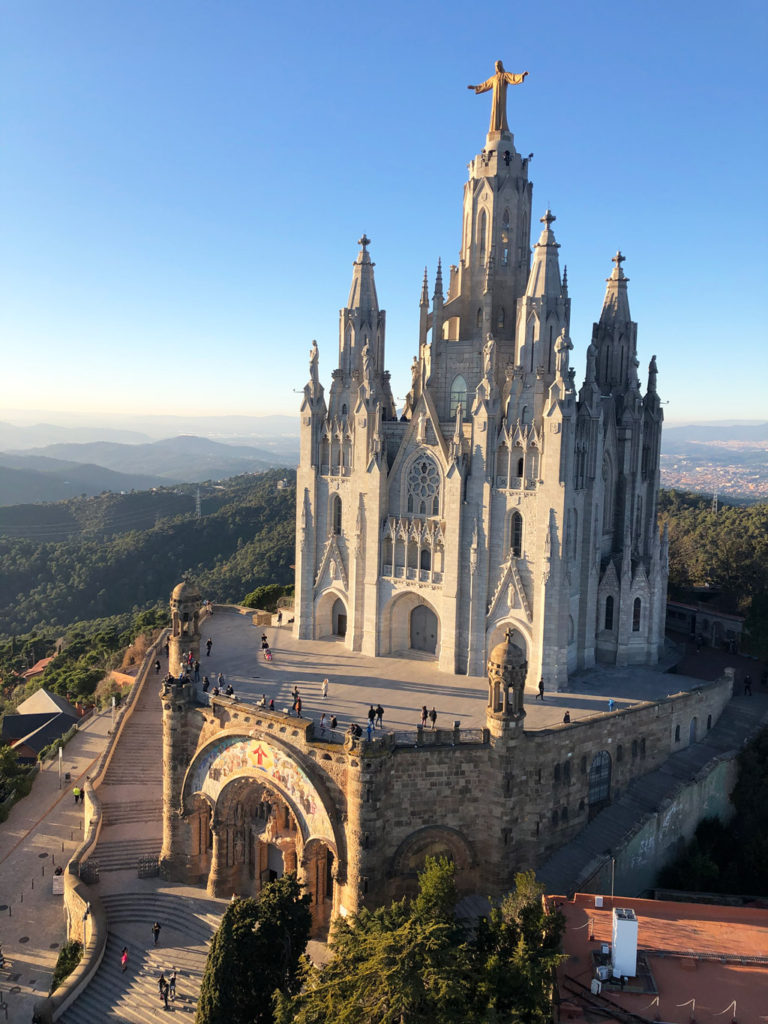
The Temple Expiatori del Sagrat Cor de Jesús also called Temple of Tibidabo is situated on the highest peak in Barcelona – the mountain of Tibidabo and boasts some of the most epic views of the entire city! The temple was designed by the Spanish architect Enric Sagnier and competed by his son. It took almost 60 years for the work to be finally completed in the 1960s. The church was built as a response to the rumors about the construction of a Protestant church and a casino. Temple of the Sacred Heart of Jesus is a catholic church built in roman and gothic styles. There are two parts of the church upper and lower. At the very top of the church stands an impressively large statue of Jesus Christ with his arms open.
The Temple of Tibidabo has some breathtaking views of Barcelona, and it’s definitely worth paying a visit. In fact, it’s my favorite place in the city where I always come back when I can. Next to the church, there is a small amusement park, and the best views of the church can be enjoyed form a Ferris Wheel.
Take brown line L7 from Plaza Catalunya to Avenida Tibidabo. From there, walk up the street and take a cable car to the top of Tibidabo. There is a €3 entrance fee to the church.
4: Cathedral of Barcelona – Josep Oriol Mestres i Esplugas
by Rachel of Earth’s Magical Places

Located in the city’s historic Gothic Quarter, the Cathedral of Barcelona is architecturally magnificent! Designed by four main architects, construction began around 1298, but the Cathedral wasn’t completed for nearly 150 years! Even then the current Neo-Gothic facade wasn’t added until the 19th century.
In this way, it’s not surprising that the Cathedral has a rich history! Most interesting is the fact that it’s dedicated to Barcelona’s patron saint: Eulalia, who refused to dismiss Jesus during the Roman times, and died a martyr as a result.
While often overlooked in favor of the more famous Sagrada Familia, a visit to the Cathedral won’t disappoint, as it’s even more impressive on the inside. I was blown away by the beauty of the nave, which is brightened by some of the most exquisite stained glass windows in the whole of Europe!
This said, my favorite part of the Cathedral is the stunning Cloister courtyard. Known as the ‘Oasis in Barcelona’ it really is like something straight out of a Disney movie! Framed by shady trees and relaxing fountains, the courtyard is famously home to 13 white geese, one to represent each year of Eulalia’s short life.
Open to visitors from 12:30 pm to 7 pm on weekdays, the Cathedral is easy to fit into any Barcelona itinerary. However, the best time to visit is just before midday… This will allow you time to visit the Cathedral’s terrace before going inside. It offers amazing views over the city, but is only open for two hours a day (between 10 am and 12 pm) making it a true hidden gem that shouldn’t be missed!
Find Rachel on Instagram @earthsmagicalplaces
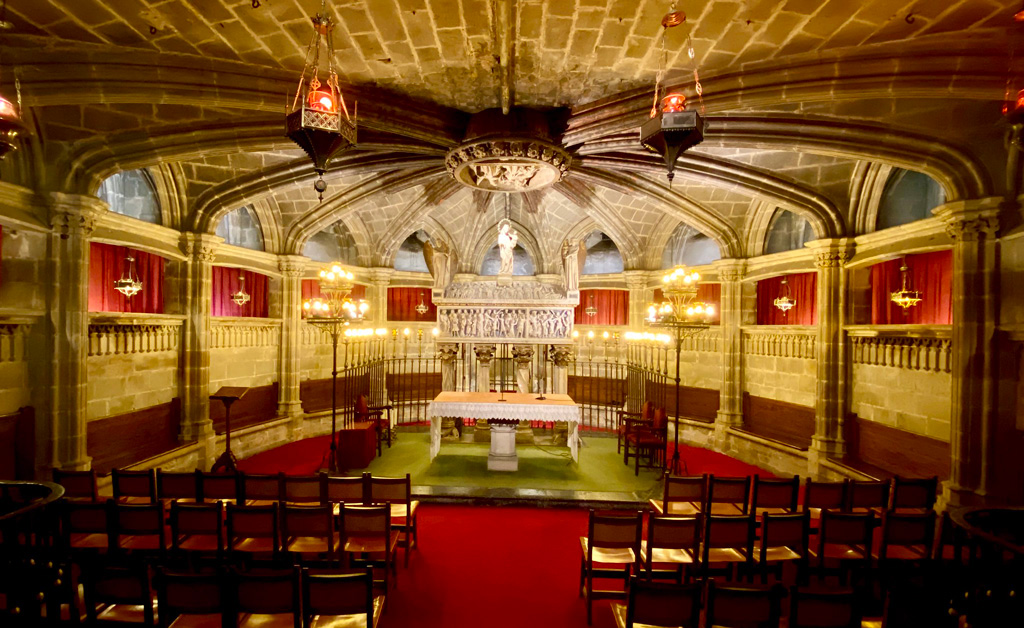
Famous Casa and Palau of Barcelona
5: Palau Guell – Antoni Gaudí
by Noel of Noel Morata
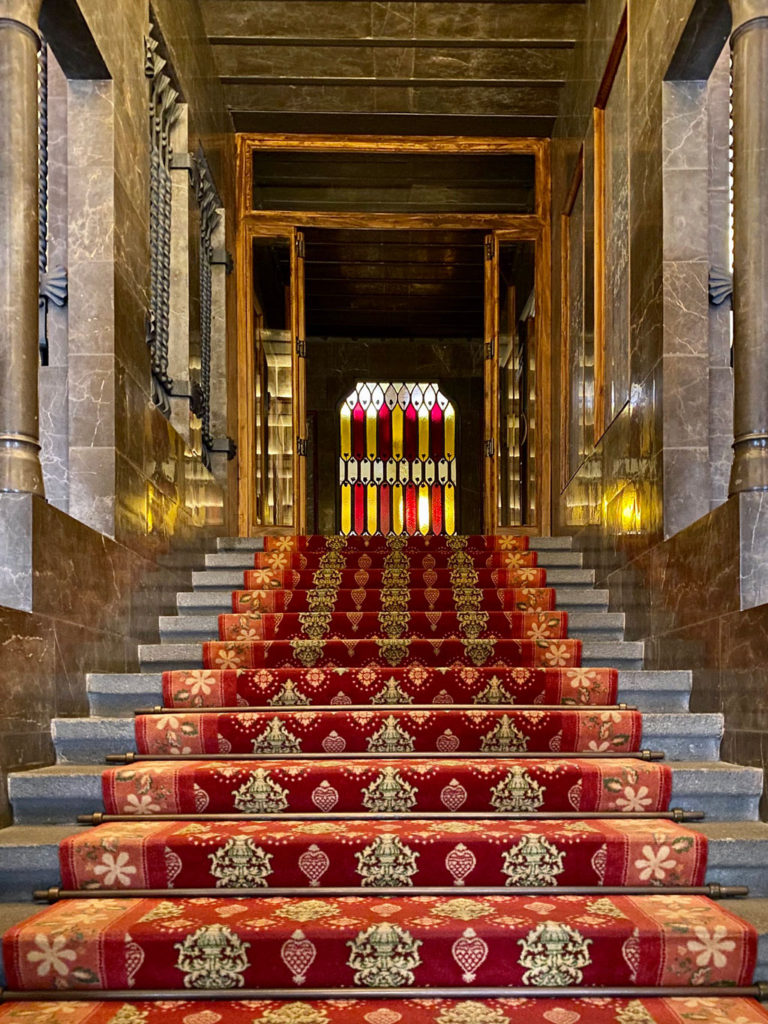
If you love amazing architecture from Barcelona and Gaudi, then visit one of his first creations called the Palau Guell located in the El Raval neighborhood of the city. Part of a collection of Unesco World Heritage sites Palau Guell is massive and the mansion to one of his biggest benefactors Antoni Gaudí’s work, Eusibi Guell – a big industrialist of the time in Barcelona.
Palau Guell, Guell’s home has all the impressive details and flourishes that Gaudi imprints on all his signature work including gorgeous ironwork craftsmanship, ornate walls, ceilings, and brick arched portals, and twenty ornate chimneys on his roof that you can also explore.
Turned into a living museum, the Palau Guell is an exhibit space, multi-purpose facility, and also a private home for the Guell family in this functional and gorgeous palace. You can either take a wonderful docent tour at the start and do a little bit more of a self-tour in the museum/public areas of the home open for the public to enjoy on their own. This is definitely a must-do attraction when visiting Barcelona and if you are exploring the city, there are many fun and free things you can do in Barcelona.
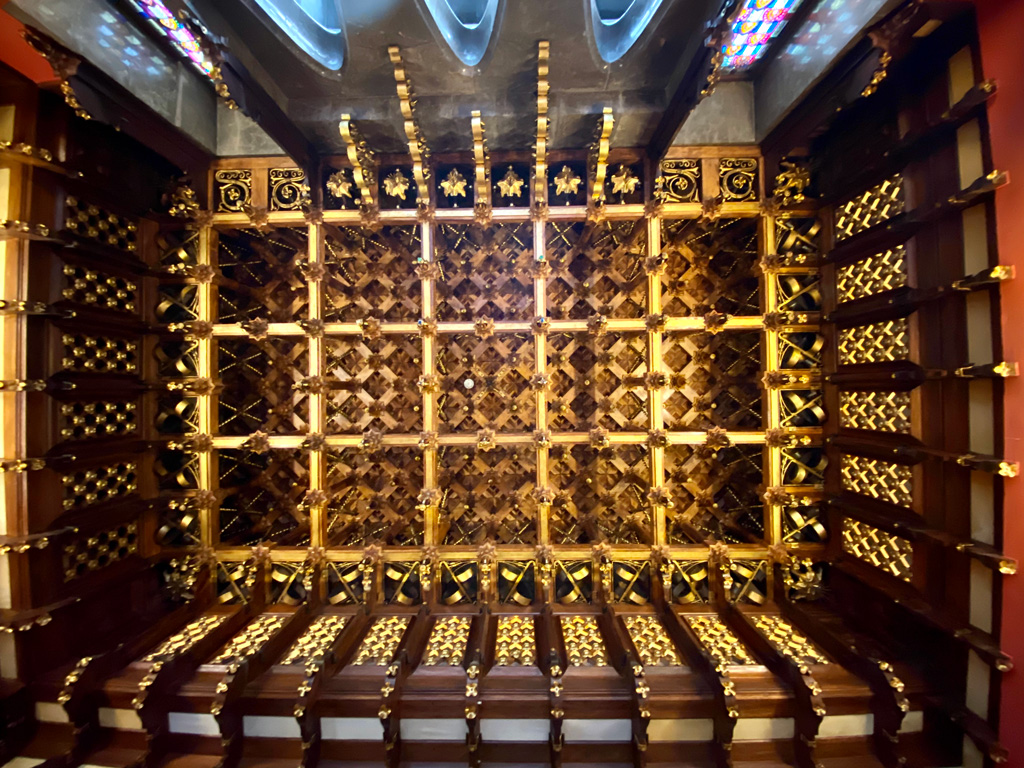
6: Casa Milá – Antoni Gaudí
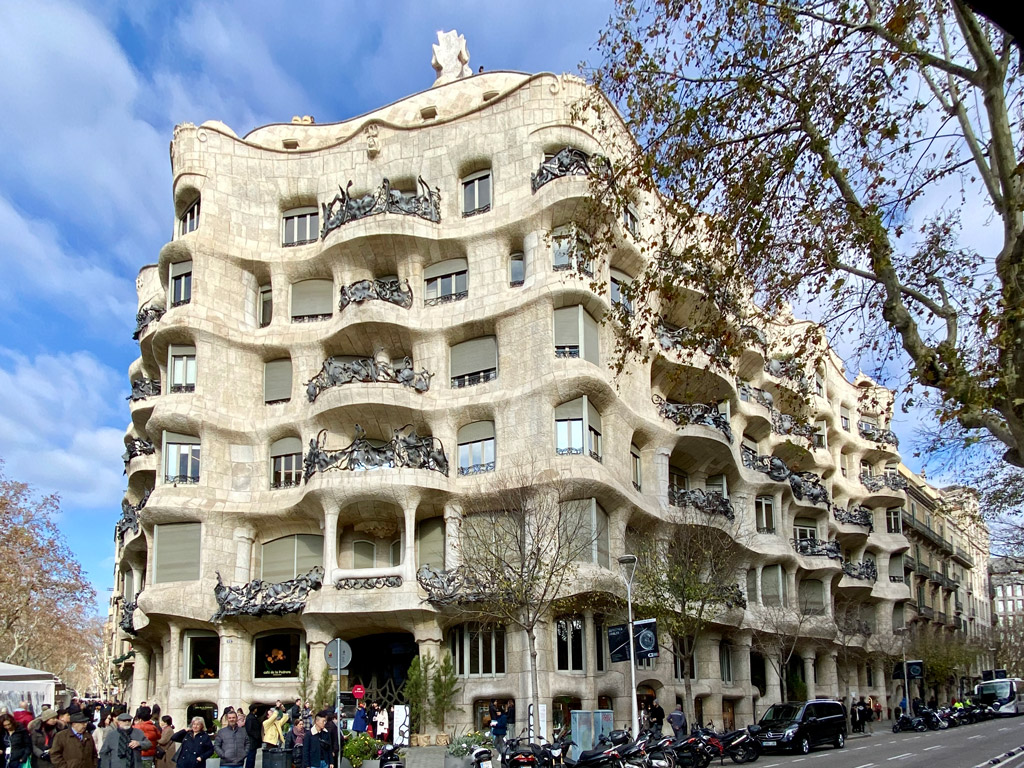
Built on the posh central street of Barcelona at the turn of the twentieth century, this luxurious apartment building was designed by Antoni Gaudí for Pere Milà and his wife, Roser Segimon. It is inspired by nature in every element of the design from the tiny sea life imprints on the tiled floors to the entire structure. Everywhere you look Gaudi cleverly imitated nature’s brilliance be it the structural engineering that hold the massive roof, or the grand butterfly that seems to be taking off in the courtyard or the jungle vines that form the balcony railings or the entire building that is structured like a bee hive with no sharp angles but seamless curves one would find in nature.
Your inquisitive self could spend the day marveling at all the details that only the most genius or eccentric designer can conceive. But, if you’re short of time, Casa Míla can be conveniently visited in a couple of hours.
While some the floors of Casa Míla are still home to tenants, the roof top, the museum below the rooftop, a restored tenant floor, the Míla residence (converted to exhibit hall) and the courtyard are open to visitors. Each floor servers a unique purpose in discovering the building, so be sure to visit all of the open floors. In pre-pandemic days, tickets are hard to comfy at the last minute. Its best to reserve the tickets online as soon as possible to avoid disappointment.
Casa Míla is located just a few minute walk from Casa Batllo, Casa Amatller and many other luxurious homes, each of which competed to create the most beautiful home on the upscale street of the rich and famous. While in Barcelona be sure to check out Casa Míla.
Check our Casa Míla’s Photo Essay
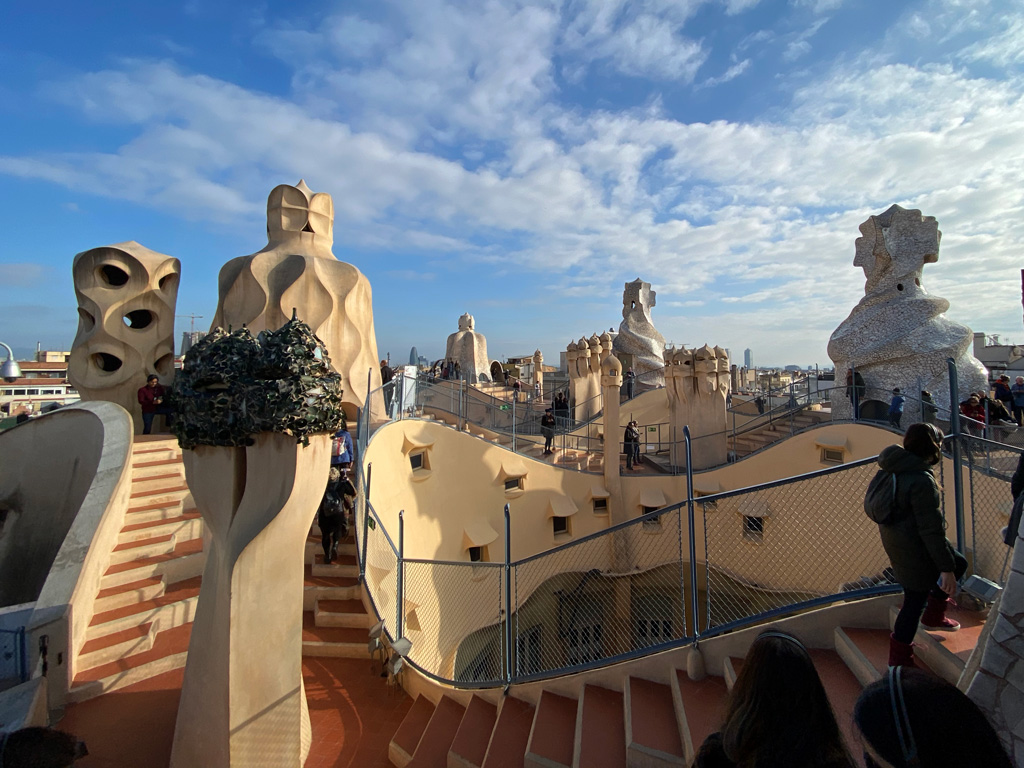
7: Casa Batllo – Antoni Gaudí
by Krystianna of Volumes and Voyages
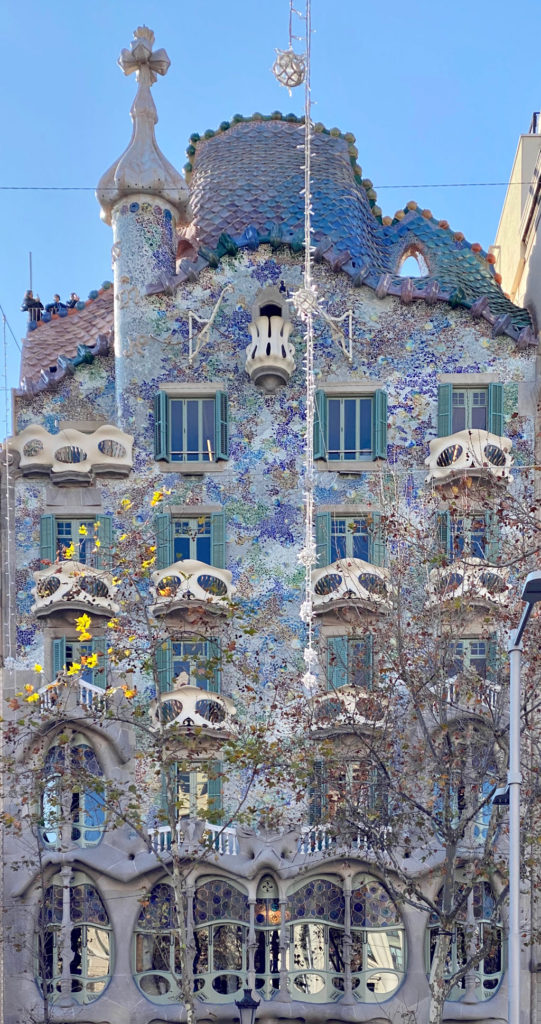
Casa Batlló is one amazing architectural gem in Barcelona that absolutely can’t be missed. It was designed and created by the famous architect Antoni Gaudí, who is one of the most well-known architects in the city of Barcelona. Seriously, you can’t go to Barcelona without at least accidentally seeing something that he helped to create!
The building itself is a 1904 redesign of an old home. Up until the 1950’s, it was actually owned by the Batlló family. They decided to open it officially to the public during that time. Now, it’s one of Barcelona’s UNESCO World Heritage Sites and it’s really a marvel to look at and experience!
If you thought that the outside of the building looked extraordinary, wait until you see the inside. It’s worth paying the fee of €29 to see its interior, which is filled with so much amazing art. The inside is filled with interesting shapes, colors, and mosaics. There’s something to look at no matter where you turn! The Patio of Lights is the real star of the show. It’s filled with a whole bunch of blue tiles and it’s absolutely extraordinary.
If you pay to see the inside, you’ll get a free audio guide that will tell you all about the building itself. Trust me, you’ll want to listen to the audio guide because this house is so interesting. It’s best to visit earlier in the morning, because it gets busier later in the day. I also recommend reserving your tickets ahead of time online!
Be sure to also swing by Casa Batlló at night to see it all lit up. It’s even prettier than it was during the day!
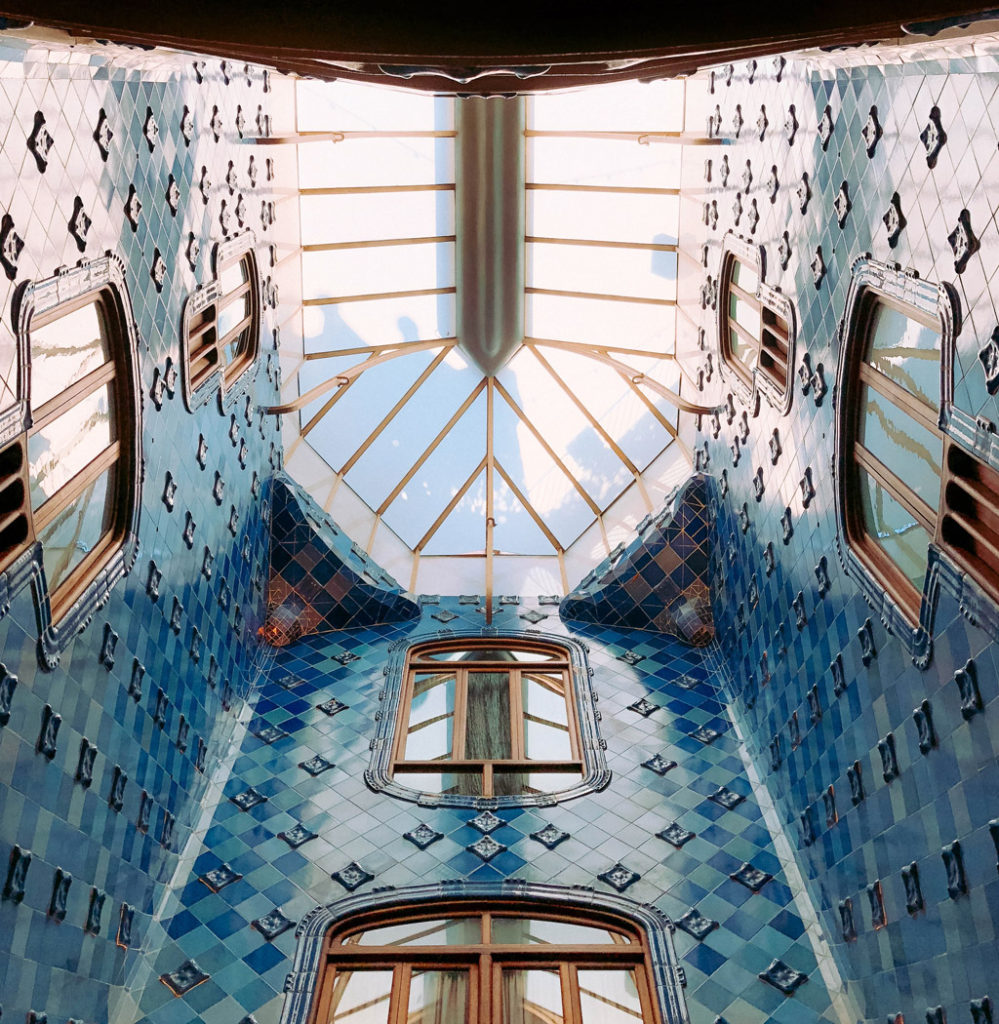
Find Krystianna on Instagram @volumesandvoyages
8: Casa Calvet – Antoni Gaudí
by Linda of Verdemode
It is near impossible to visit Barcelona without hearing the name Antoni Gaudí. His colorful, embellished buildings draw vast crowds daily keen to see his grand designs close up. But not all Gaudí’s buildings are made for the limelight. Sitting quietly on Carrer de Casp in the city’s busy Eixample district is Casa Calvet; the first of Gaudí’s additions to Barcelona’s extension.
Casa Calvet was built in 1899 for textile manufacturer Pere Màrtir Calvet as both a residence and commercial use building. It appears restrained in design for the usually flamboyant Gaudí but is the crossover from conservative architecture to the Catalan Modernisme movement he became so well-known for. Still, on close inspection, you’ll find the architect’s signature organic flourishes and thoughtful additions. The columns flanking the entrance are stacked bobbins; a nod to the owner’s textile business. Mushrooms are carved into the stone around the balconies, alluding to Calvet’s passion for collecting fungi, and across the top of the building sit three figureheads representing the family.
It’s a significant building for me because I once studied architecture but never completed the degree. I have often thought of finishing it in Barcelona as I love the Modernista style. When I visited the city with a view to moving there, a resident told me about Casa Calvet. Since seeing it I’ve thought everyone who likes Gaudí’s architecture should seek out the building to get a better feel for Gaudí’s own journey.
While there are no tours of Casa Calvet, you can get a taster of the interior design by visiting the Asian restaurant that now occupies the ground floor of the building. Thankfully Gaudí’s designs, from windows to door knockers, are fully conserved.
Where to find Casa Calvet: Carrer de Casp, 48, Barcelona
Best time to visit: The exterior, any time, although sunset is best for photography.
Find Linda on Instagram at @_verdemode
9: Casa Vicens – Antoni Gaudí
By Monique at TripAnthropologist
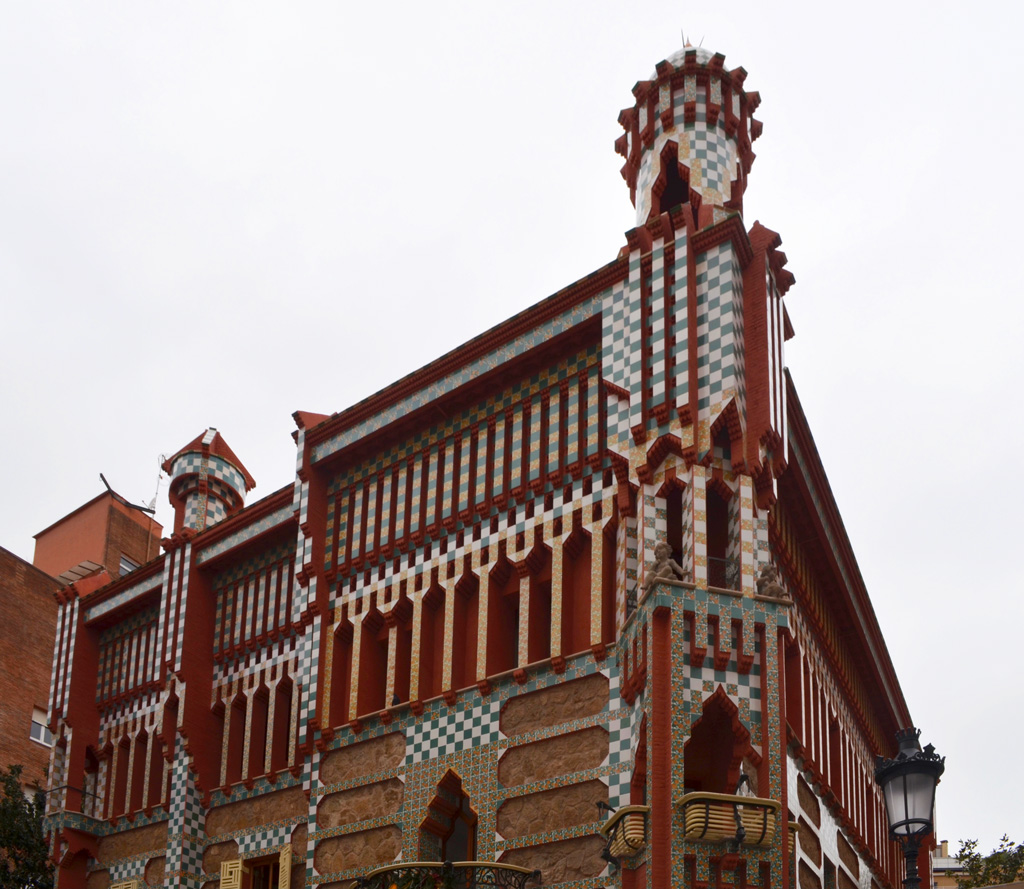
Known as “God’s Architect,” Antoni Gaudí transformed Barcelona and made it his own. Casa Vicens was Gaudí’s first domestic commission as well as being the first building he designed and built-in Barcelona. A native Catalan, Gaudí’s work in a unique genre that incorporated Gothic and Art Nouveau styles but added imaginative and often surreal, fantastical and whimsical elements to its design.
Casa Vicens was built in 1883-5. Gaudí’s work is more art than architecture, and in Casa Vicens, Gaudí recreated the idea of a domestic residence as one of small, familiar rooms for particular functions. It was designed to be a summer garden home for the Vicens Family. It is one of 6 Gaudí buildings given UNESCO World Heritage status in Barcelona.
The first piece of architecture from Gaudí shows many of the shapes, perspectives and the integration of design elements with function that became the hallmark of his work. Casa Vicens is unique amongst his works because he integrated every aspect of functional design into all of the everyday rooms, views, and uses of domestic architecture. Gaudí went on to build palaces, basilicas, parks, and precincts, but Casa Vicens was his first and the only to develop his unique way of looking at how people can live in domestic spaces.
Casa Vicens now houses a museum, café, garden and contemporary accessibility additions. It is re-opening to the public on July 9 and although it is not as grand as his later buildings, walking through Casa Vicens it is possible to imagine what it would be like if Gaudí designed your home – it’s a great experience and I recommend it as the first Gaudí’ building you visit in Barcelona.
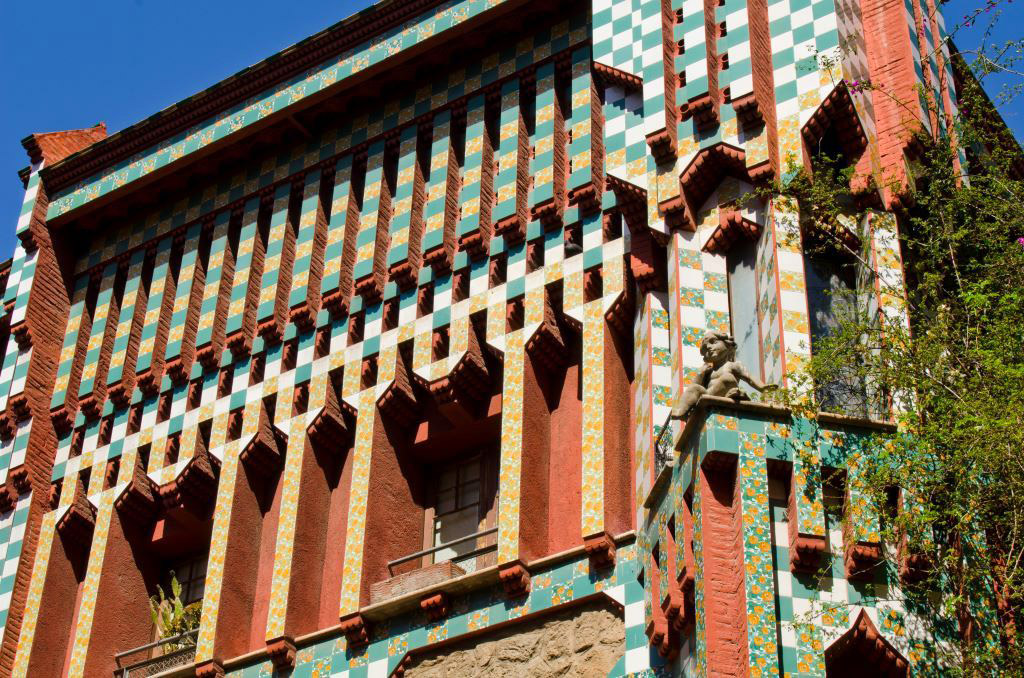
Find Monique on Instagram @
10: Palau Baró de Quadras – Josep Puig i Cadafalch
by Esther of Mooiste Stedentrips
Are you in Barcelona on a Wednesday? Then you are in such luck. Because this is when Palau Baró de Quadras opens its doors to the public. Between 11:00 and 13:00 hrs, it’s possible to join a tour and discover this hidden jewel in the Diagonal quarter.
Most visitors to Barcelona discover the modernist quarters of Eixample, Diagonal, and Gracia and immediately flock to the famous Gaudí buildings. Completely understandable, but it’s a shame that other modernist jewels get overlooked. And Palau Baró de Quadras is such a fine example of early Barcelona modernism architecture that it deserves a closer look. It was built between 1904 and 1906, commissioned by Barón de Quadras who, like many others that made their fortune in this period of time, wanted a modern home in the new Barcelona expansion outside the city center. Palau Baró de Quadras was designed by Josep Puig i Cadafalch who was, along with Lluís Domènech i Montaner and Antoni Gaudí, responsible for the most striking buildings in Catalunya at the turn of the last century. He designed many famous modernist buildings in Barcelona, like Casa de les Punxes and Casa Amatller. He was not just an architect though, but also an enthusiastic archeologist and historian always trying to get Romanesque buildings in Catalunya restored.
The fascination for Roman and Greek history is visible in his architecture as well. Palau Baró de Quadras has a striking black and white mosaic floors that are definitely Roman-inspired, as well as the neo-classical archways, fountains, and tile work around the main staircase. And the round blue glass tiles on the doors definitely remind you of the Aegean Sea. The family of Baró de Quadras lived on the first floor, which is quite visible from the outside as you see the elaborately decorated façade from the first floor up. On the inside, the large rooms are influenced by the Múdejar style with beautiful wooden floors and floral motifs. During your visit, don’t forget to look up and admire the coffered ceilings.
Personally, I think Palau Baró de Quadras is a true hidden them as the company that rents the building, the Institut RamonLlull, only opens the doors of the palace for not more than a few hours every week, so not many visitors to Barcelona will be able to share this experience with you. I think that especially all the windows are gorgeous, from coarse cut glass panels to refined floral stained-glass windows, letting each room bathe in beautiful light.
Find Esther on
11: Casa Amatller – Josep Puig i Cadafalch
by Vaibhav of The Wandering Vegetable
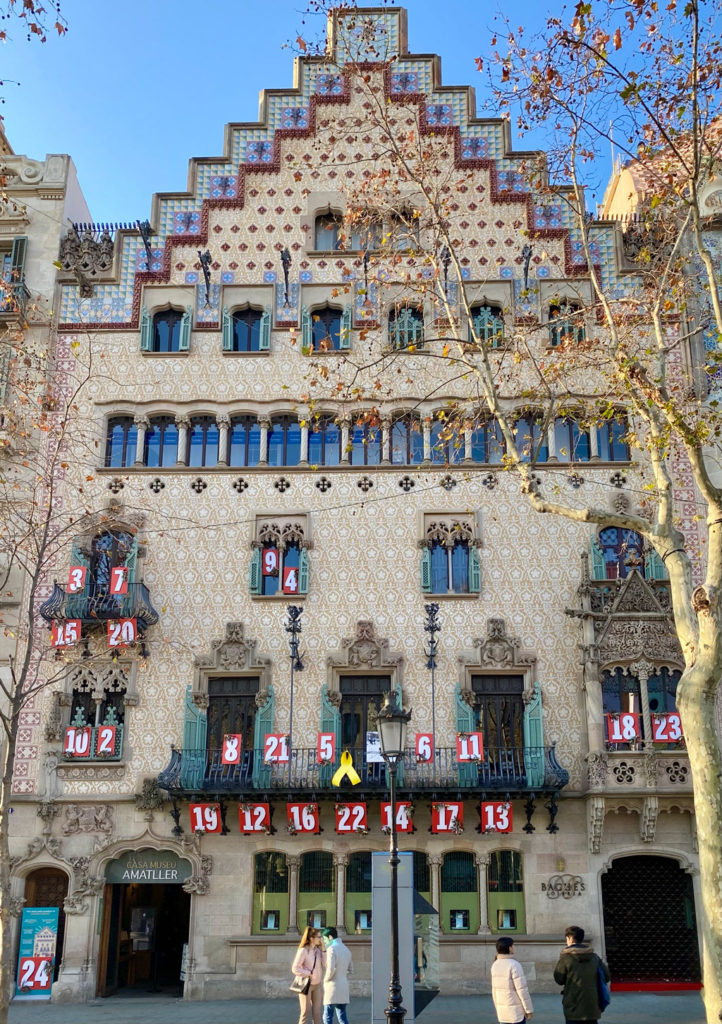
Casa Amatller is a ‘Modernisme’ style building that was originally designed as a residence for chocolatier Antoni Amatller Costa. Standing next to Antoni Gaudi’s famous Casa Batlló building on Passeig de Gracia in Barcelona, Casa Amatller is an architectural masterpiece that reflects the very essence of Catalan modernism.
The iconic building was designed by Catalan Spanish Modernista architect Josep Puig i Cadafalch. He was not only a designer and architect of popular Barcelona buildings like the Casa Marti but also a politician who played a vital role in the growth of important Catalan institutions. He applied neo-Gothic architectural features in the design of the Casa Amatller. A style that is clearly visible from the flat but attractive facade, the classic central patio, and the stained glass ceiling.
You are given a guided tour of the museum which brings alive the rich design legacy, the tales of the growth of the bourgeoisie, the lives of the owners, and their rivalries with the neighbors. The furniture in this beautiful building is almost entirely original and the art collections are gorgeous and well-preserved. The main attractions in the building are the dining room, the salon, and the bedroom of Antoni Amatller.
The place is worth a visit as it gives you an idea of a rich man’s life during the late 19th and early 20th centuries. It also gives you an insight into the stunning aesthetics and interior styles from those times. An added incentive to visit the place is that you get to taste some of the most amazingly smooth delicious hot chocolate and soft bread in a cafe (inside the Casa Amatller itself) at the end of the tour. You can also buy some Amatller chocolates from the shop on the ground floor.
The best time to visit the place is either early morning from 9 am -11 am or early evening from 3 pm – 5 pm. You can get to Casa Amatller by either taking a metro (Lines L2, L3, L4) to Passeig de Gracia, or take a hop on hop off tourist bus and get down at Casa Batlló (Casa Amatller is right next to Casa Batlló). The admission fee for the entire tour (including the hot chocolate and bread experience) is 24 Euros.
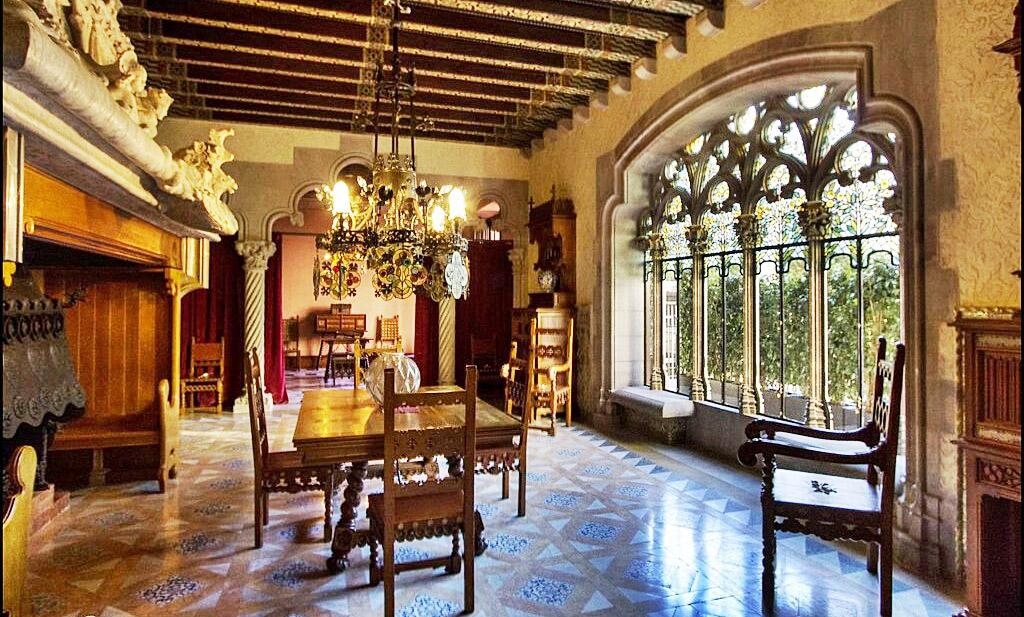
Find Vaibhav on Instagram @the_wandering_vegetable
12: Casa Punexes – Josep Puig i Cadafalch
by Sinjana of Backpack & Explore
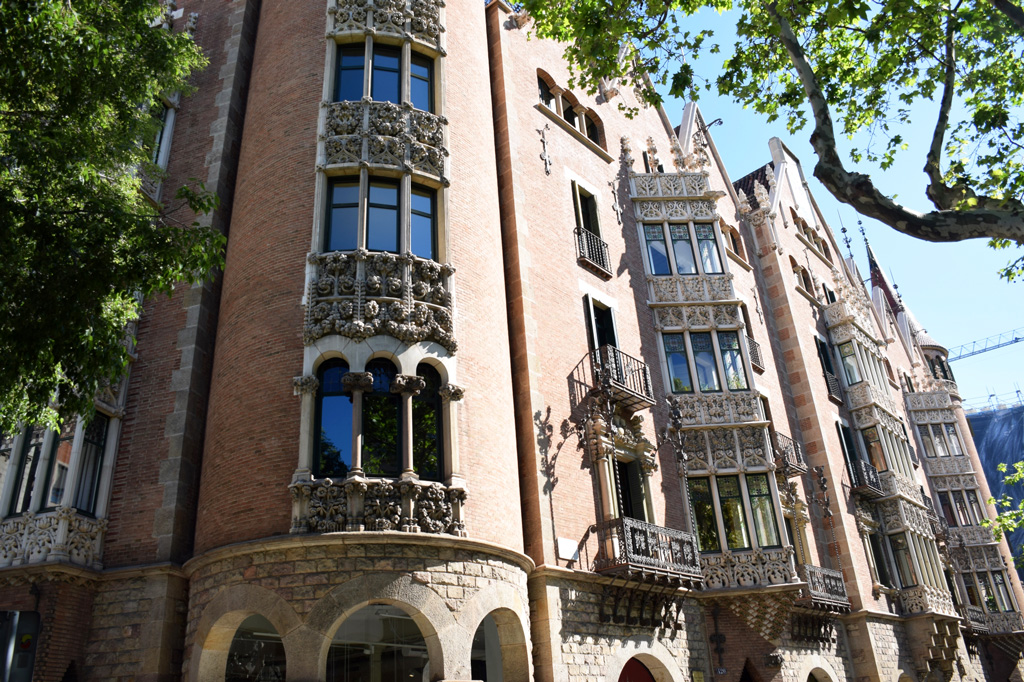
Casa Punexes is one of the most beautiful buildings in Barcelona. Located near the famous Block of Discord, it is often overlooked by tourists. The monument resembles medieval castles with various technical innovations which are explained in the audio-visual tour inside
In 1905, Bartomeu Terradas Brutau commissioned modernist architect Josep Puig i Cadafalch to design a house for each of his three sisters. It got its name “Punexes” from the six-pointed towers crowned with conical spikes.
The audio-guided takes you through the history and architecture of the modernist monument. What I loved most about the AV tour is the mythological story of Saint George. It’s a legend that inspired the building. The tour ended at the rooftop from where you can get panoramic views of the city.
You can top up the experience with a brunch, cocktail, or a cup of Cava.
In the peak season of May to August, this is one of the few monuments where you may not have to queue up. I remember that I couldn’t enter any of the modernist buildings in the block of discord because of the long queues. Besides the beauty of the building and the tour, this is my top reason to include it in your Barcelona itinerary.
The price of Adult (18+) Ticket prices is € 13.50 for audio-guided and € 20 for a guided tour. You get 50% off with the Barcelona pass. It is a wonderful place to visit in Barcelona at any time of the year.
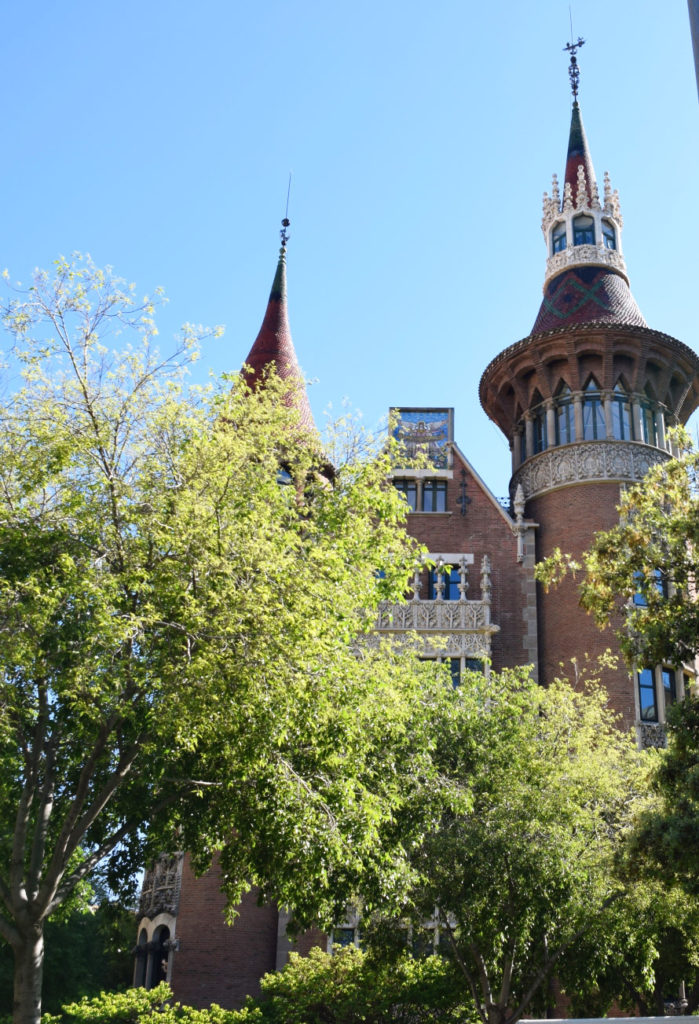
Find Sinjana on Instagram @backpacknxplore
13: Casa Lleo Morera – Lluís Domènech i Montaner
by Sally of Loving Life in Spain
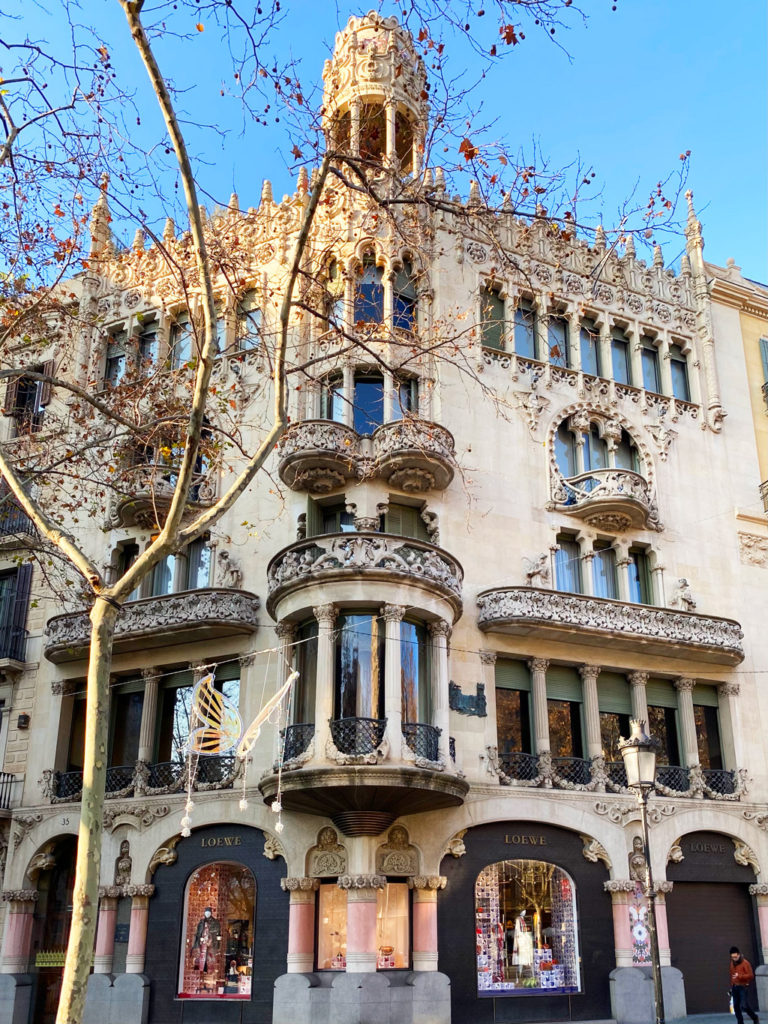
Casa Lleó Morera is known to be a redesign by architect Lluís Domènech i Montaner, a noted modernisme architect born in Barcelona. The original building, “Casa Rocamora,” was built in 1864, and Lluís Domènech i Montaner collaborated with numerous artists on the redesign. It was common practice to do so in the Catalan modernism architecture era.
Not everything you see now is original work. Unfortunately, the dome on the top of the building, known as the tempietto, is not the original. During the 1937 Spanish Civil War, it was severely damaged by crossfire because it was used as a machine gun nest. Years later, it was reconstructed. Then the building lost its mezzanine’s architectural sculpture and the ground floor elements during a remodel in 1943.
It has been said that the original owners, the Morera family, wanted to leave elements of their family heritage within the architecture of the building. Morera means Mulberry Tree in English, and you will see aspects of the Mulberry Tree in the motifs of the door handles, the portraits on the second floor, and in the patios.
The interior of the building is closed. However, you can take a virtual tour of the interior by visiting their website. When you are in Barcelona, it is definitely worth visiting to see the exterior of the stunning building. Chances are you will be near the building as it is located at Passeig de Gràcia 35, a trendy shopping street in the city center.
Find on Instagram @lovinglifeinspain
Must Visit Parks in Barcelona
14: Park Guell – Antoni Gaudí

Güell and Gaudí conceived Park Guell park, within a natural park. The site was meant to have 60 luxury homes and the park with beautiful views in a garden-like setting. The luxury homes would have the top amenities of those modern times. However, only two houses were built, neither by Gaudi himself. Despite the unsuccessful housing project, the park was loved by many and is now a heavily visited municipal park.
At Park Güell went all out to build structures inspired by nature, using nature’s rocks and his signature tiled mosaic structures like the salamander and the dragon. The serpentine bench surrounds the huge upper-level courtyard. It’s beautifully designed for large number of visitors to sit, and yet have a private space to converse. Little details like – the slanting serpentine bench allows rainwater to flow backward to the drains, and the mounds are a gentle guide for the visitor’s behind to stay away from water.
Park Güell is huge, with many sections, the large hall beneath the courtyard propped up by many pillars and decorate by Gaudi’s signature tiles. The park has many walkways and gardens, built to be functional and seamlessly integrate with nature.
Check out more photos of Park Güell
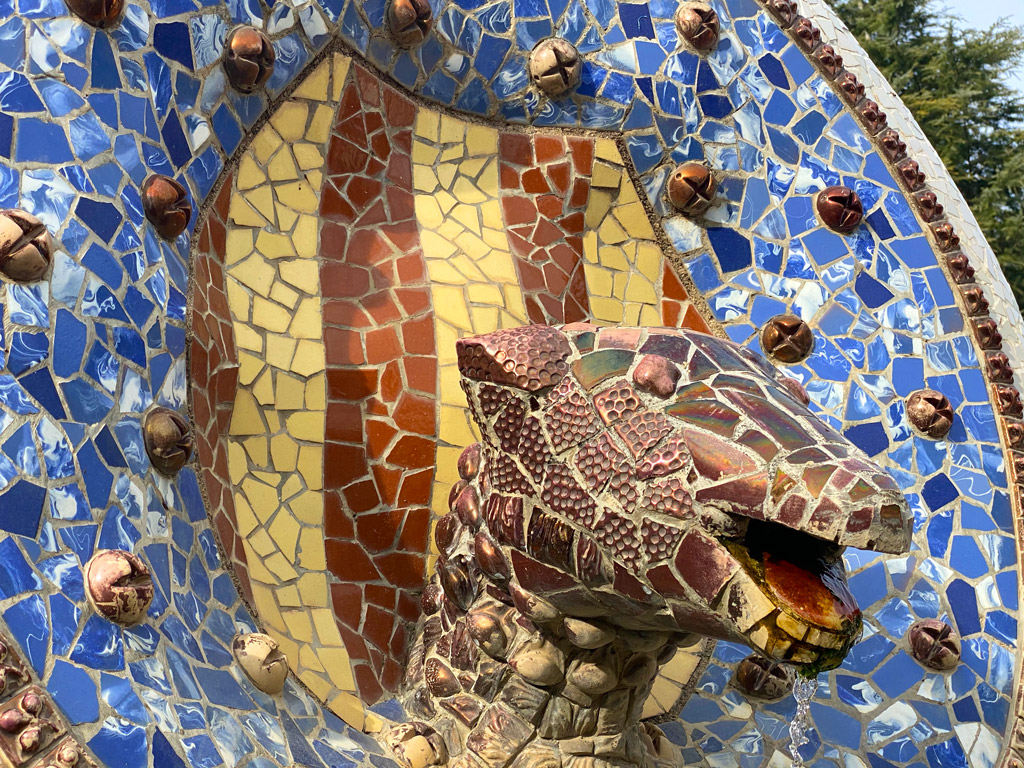
15: Parc de la Ciutadella – Batlle i Roig
by Laura of Laura No Esta
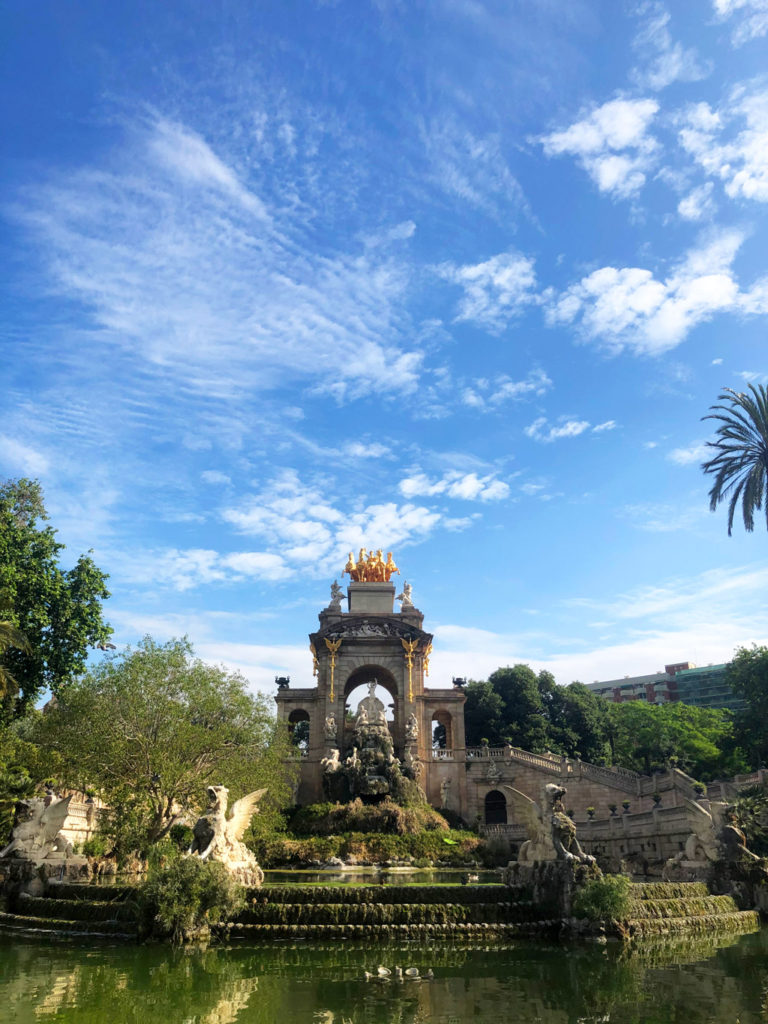
The Park de la Ciutadella is one of the most important architectural gems in Barcelona and people keep on missing it! It’s not as magnificent as the Sagrada Familia or as charming as the Park Guell but it has a remarkable history.
This park, created in 1881, was one of the first public parks in Barcelona and it was born in the mind of Joan Fontseré, the same architect that created the Mercat del Borne. He was deeply inspired by the Luxembourg Gardens of Paris.
The reason why this park is usually not visited by tourists is that they don’t know one of the most amazing things of the park. The main piece of the place, the waterfall or fountain that’s in the center of the park was created, partially, by Antoni Gaudí when he was just a student.
Gaudí, the creator of the catalan modernism, was starting his career as an architect when Fontseré hired him. Rumor said that he created the decorative motifs that make the fountain so magnificent.
Besides the fact that this could be one of the early works of Gaudí, the park has its own charm. There’s much more to see that the fountain, just take a look at the Castell dels Tres Dragons, created by Domènech i Montaner, also iconics masters of the catalan modernism, now the house of the zoology museum.
The park itself is quite big, 70 acres ready to welcome you to one of the greenest spaces in the city. You can go there for a walk, to take some pictures, have some snacks and keep touring the city.

Find Laura on Instagram @lauritaotero
Architecture for a Rich and Fulfilling Life
16: Hospital de Sant Pau – Lluís Domènech i Montaner
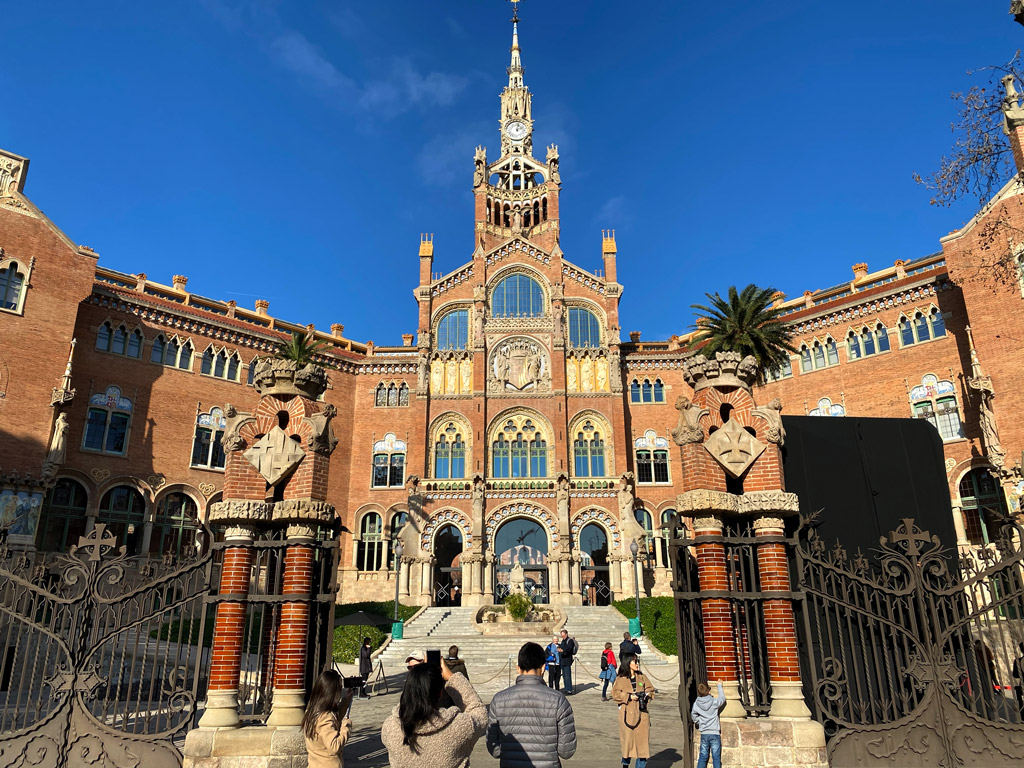
Hospital de Sant Pau museum, by the renowned architect Lluís Domènech i Montaner, has been an integral part of Barcelona and the Catalan region for 6 centuries. It was redesigned in the early 1900s at the bequest of many wealthy donors and architect Lluís Domènech i Montaner. It remained in operation until 2009 thereafter it was restored to its original glory and converted to a museum and place for exhibitions.
By the time he was commissioned to design the mini-city within the city, Lluís Domènech i Montaner was a renowned architect, thinker, political influence, and a father of the Catalan movement. A much-respected figure in Catalonia, he put his heart into designing and building the hospital until his death. Thereafter, his son took forth the work.
Along with Antoni Gaudi (1852-1926) and Josep Puig I Cadafalch (1867-1956), Lluís Domènech i Montaner work is a good representation of the Modernisme style in Barcelona and Catalonia. As can be seen in the scaled model below, this elite hospital turned museum, has a very elegant, symmetric, and functional design.
Hospital de Sant Pau has been the site for many medical innovations and exemplary patient care.
Read all about Hospital de Sant Pau
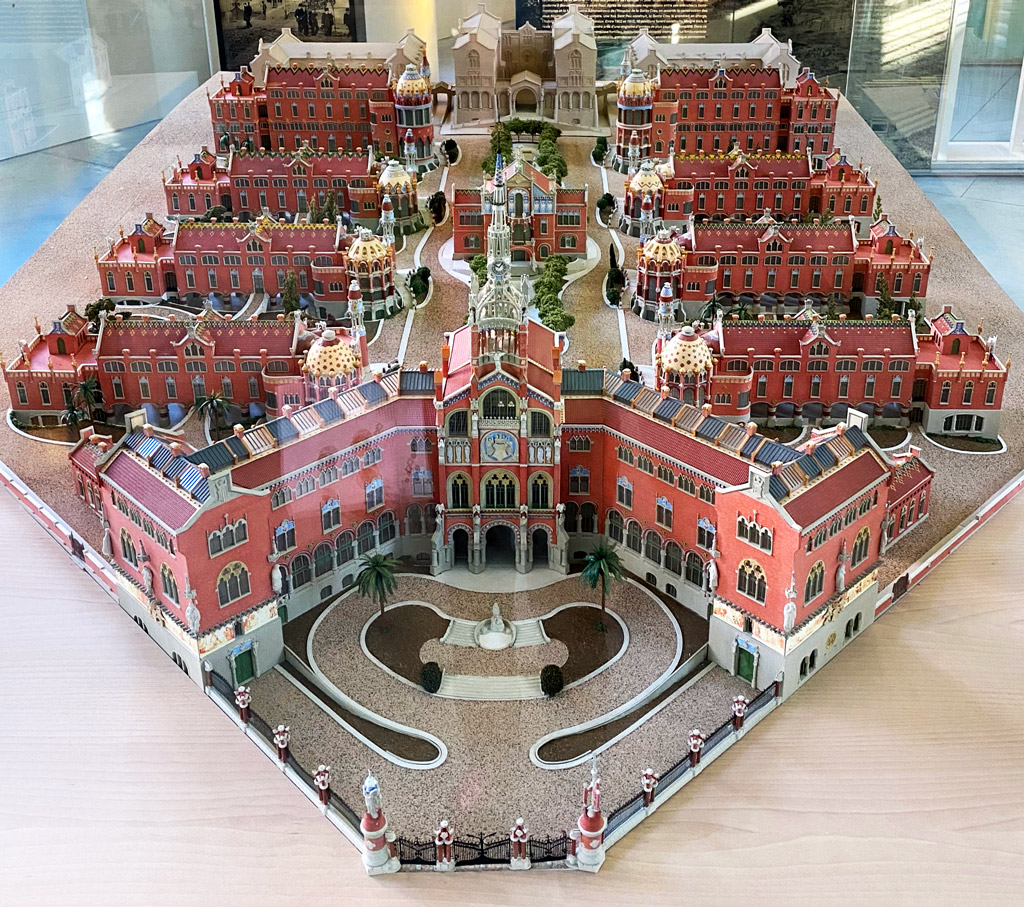
17: Palau de la Musica Catalana – Lluís Domènech i Montaner
by Brenda of Traveliera
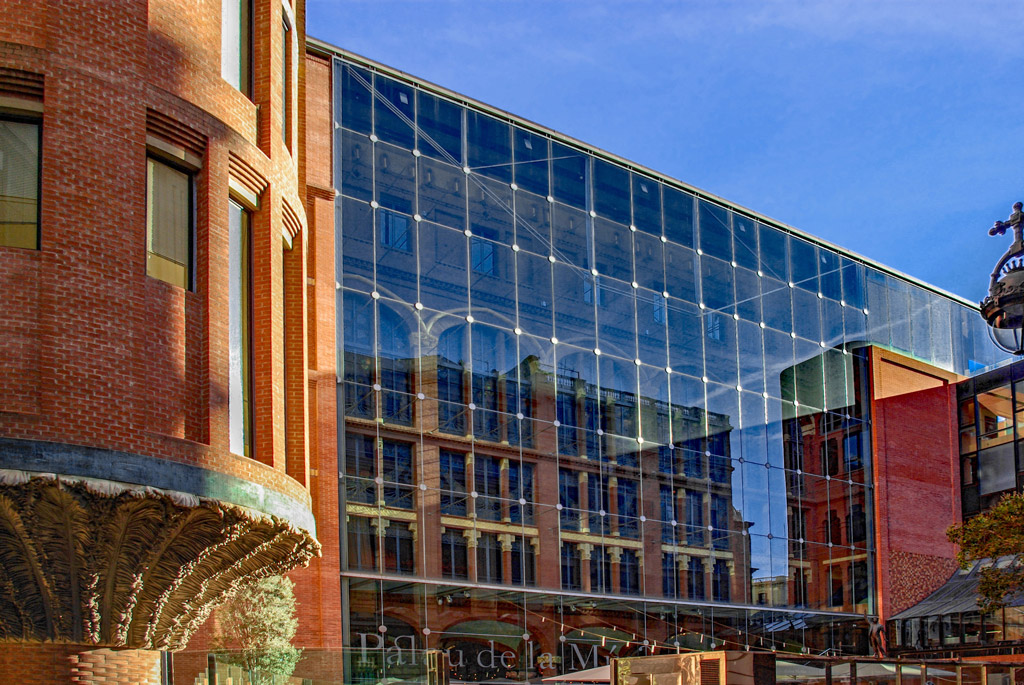
Located right in the center of Barcelona, the Palau of la Musica Catalana is one of the most brilliant architectural gems of the Catalan Modernism. It was designed by Lluis Domenech I Montaner and it was declared UNESCO World Heritage Site. Maybe Domenech in Montaner is one of the less known big names of Catalan modernism, but he is also known for his work in the Hospital de Sant Pau.
One of the greatest features of the Palau de la Musica is its original entrance, which has a ticket box located at the center pillar. Inside, it is known by being the only auditorium in Europe that is illuminated during daylight hours entirely by natural light thanks to its stained-glass arches.
While I lived in Barcelona, I must admit that this building and the square right in front of it were two of my favorite places. The square where it is located always has seasonal art expositions that are worth seeing.
El Palau can be easily found from Via Laietana, one of the most important streets in the center of Barcelona. You can go and visit the building or get a guided tour starting from 10€. Guided tours are available in English, Spanish, Catalan, and French. There are no excuses to get to see one of the most spectacular buildings in Barcelona.
Find Brenda on Instagram @traveleira
18: Torre Bellesguard – Antoni Gaudí
by Paulina of Paulina on the Road
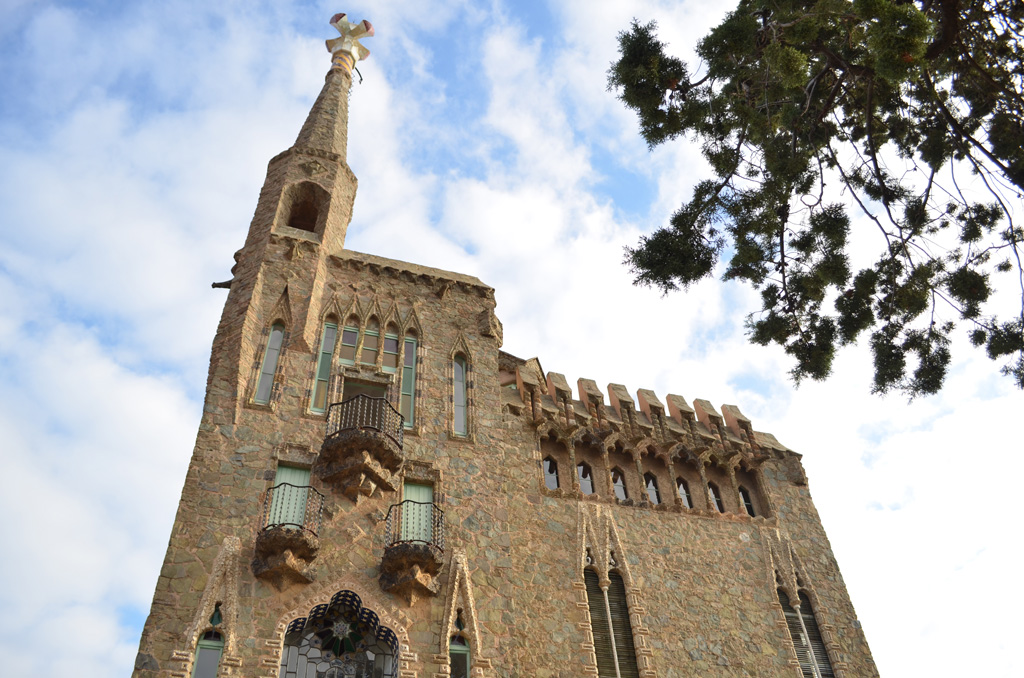
If you are looking for an architectural gem in Barcelona that is not as touristy as most Gaudi buildings and not as crowded as the Sagrada Familia, then I recommend Torre Bellesguard.
Located in the outskirts from Barcelona, is a great place to visit if you have more than 48 hours in Barcelona. Built by a design by Antonio Gaudi between 1900 and 1909, the castle is an intriguing mix of Gothic and Modernism. You’ll find references to the Roman civilization, past kings or popes, and a garden full of allegories. It is surrounded by plenty of lush gardens which are very inviting to spend the entire day.
On top, the views are gorgeous and the temperatures are cooler than downtown.
Did you know that the building is still inhabited? Thus it is important to book your visit in advance via the official website of Torre Bellesguard. That said, it’s absolutely visiting this off-the-beaten-track gem. You can easily reach this gem by bus 22 from Plaza Catalunya.
Find Paulina on Instagram @paulina_on_the_road
19: Arc de Triomf – Josep Vilaseca i Casanovas
by Vicki of Vickiviaja
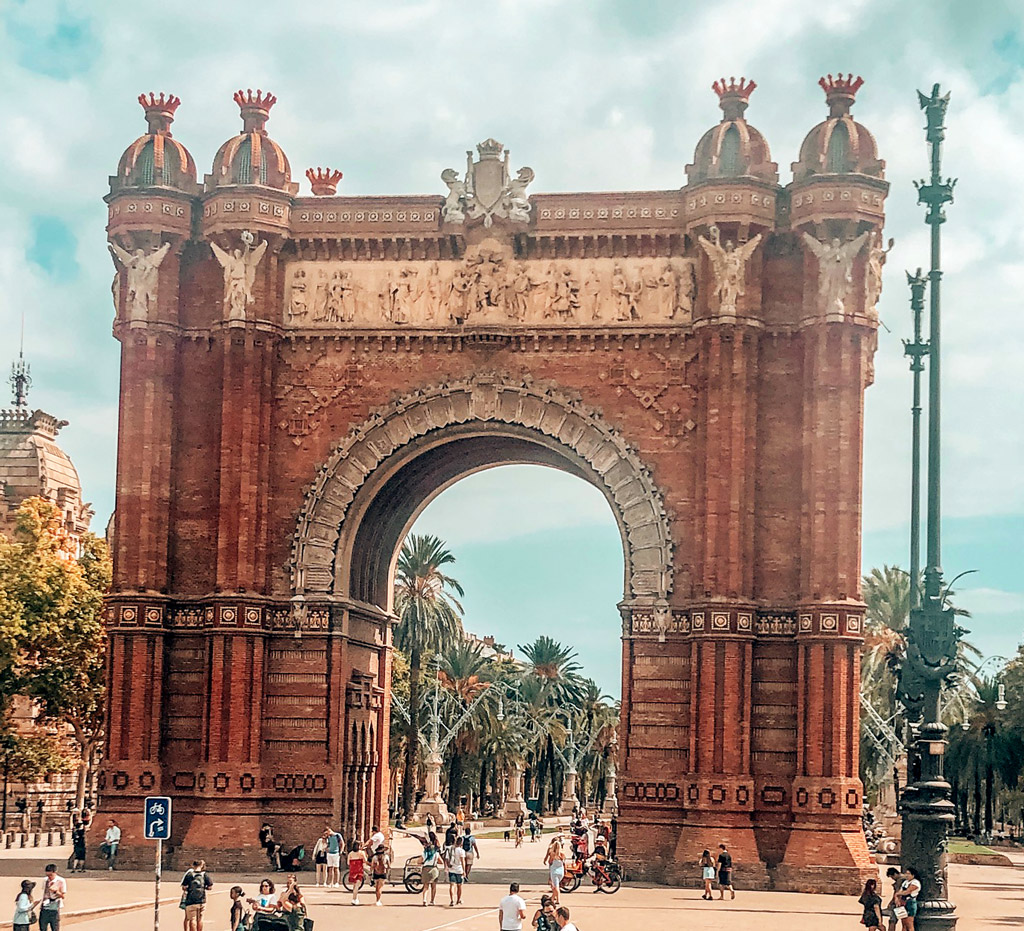
One of the most underrated places to see in Barcelona is definitely the Arc de Triomf (Catalan for “triumphal arch”). Although the arch is considered by many to be one of the landmarks of the city, due to its location just a little bit apart from the other sights, it is overlooked by many visitors.
If you cross the arch and follow Passeig de Lluis Companys promenade, you will discover plenty of street artists and entertainment here because there is always something going on. If you follow the promenade to the end, you will reach one of the city’s most beautiful parks, the Parc de la Ciutadella.
The Arc de Triomf was built for the Barcelona World Exhibition in 1888. There it was used as the main entrance gate. Its designer Josep Vilaseca i Casanovas also designed several other important buildings in the city and is still considered one of the most important architects of the early modernism in Barcelona. The neo-Mudejar style arch can, however, can be viewed as the most important of his works.
Incidentally, the almost 30-meter high triumphal arch can already be seen from afar. Its striking red color, which comes from its bricks, also makes it difficult to miss. Anyone standing directly in front of the arch will be able to see a lot of details. In the middle of the arch are, for example, the coat of arms of Barcelona, as well as the coat of arms of the other provinces of Spain. However, further details and artistic designs can be seen on the sides.
Even if the Arc de Triomf is not exactly near to our flat, I like to come here once in a while. The promenade and the park behind it are just perfect for a walk.
Find Vicki on Instagram @vickiviaja
20: Santa Caterina Market in El Born – Enric Miralles
by Tara of Tara’s Travels
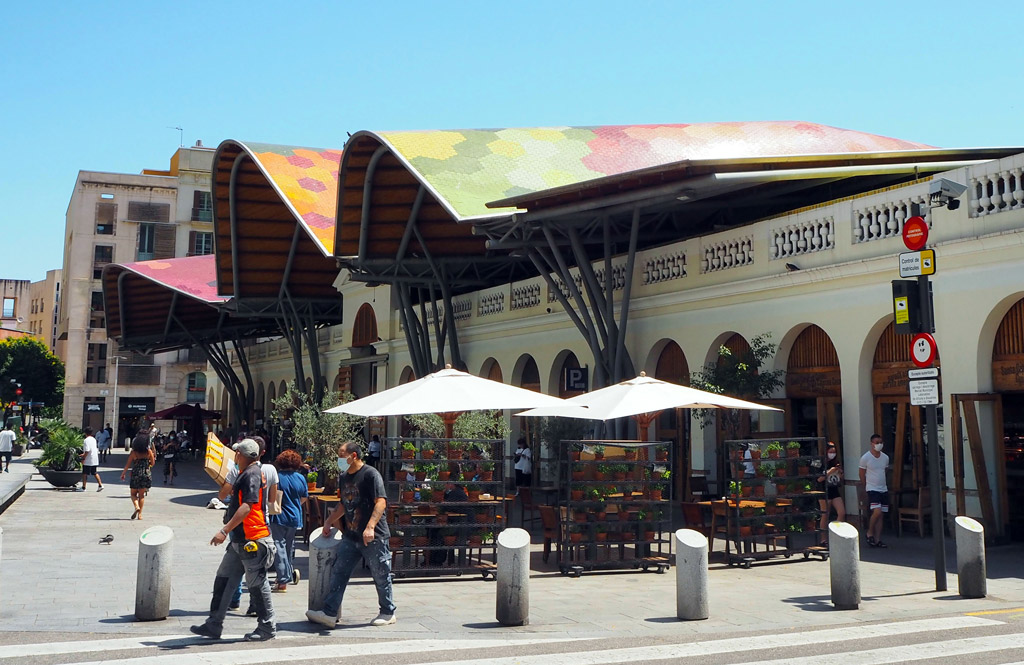
Although Barcelona is most known for its modernisme architecture, the city is a goldmine of all styles including many modern works from famous Spanish designers. The market of Santa Caterina in the old Ribera district is one such that should not be missed. The market itself has been open since the 1800s but it underwent a creative renovation in 2005 by Enric Miralles and Benedetta Tagliabue architects that reflects Barcelona’s lively character.
The new design fuses the old market with a colorful undulating roof. The vibrant roof is made up of over 300,000 hexagonal ceramic tiles and now covers a fruit and vegetable market, a few restaurants, a supermarket, and archeological remains that were uncovered during the renovation. The colors of the tiles are the main attraction, and the undulation of the roof shows them off. The bark of the sycamore tree was the inspiration for the color scheme, as it is found throughout the city, most notably along the Ramblas. The bark peels by the season, changing in vibrant colors, just as the fruit and vegetables do in the market.
This is one of the few architectural gems in Barcelona that you don’t have to wait in line or pay an entrance fee, but can explore among the locals. Go there for an authentic Catalan lunch after visiting one of the nearby museums, as there is a tapas bar at the main entrance or a small affordable eatery at the back called Bar Joan that has the typical local dishes.
Find Tara on Instagram @tarastravelz
Check out the delicious Pintxos in El Born when you visit Santa Caterina Market.
21: Biblioteca de Catalunya – Josep Llinàs
by Jeanine of Le Wild Explorer
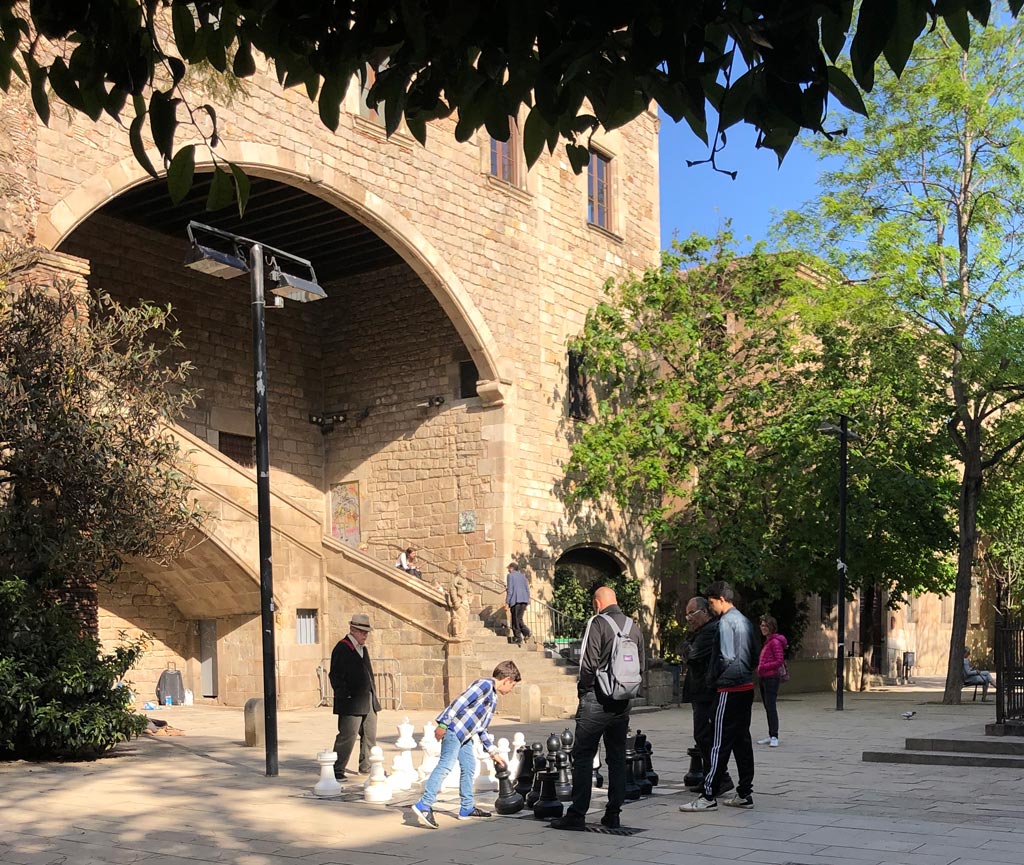
The National Library of Catalonia is located in El Raval neighborhood of Barcelona. The library has a unique history as it was founded in 1907 and a part of the Old Hospital de la Santa Creu. The hospital was designed by master builder, Guillem d’Abriell in the early 15th century. Guillem d’Abriell isn’t the most well-known name when it comes to Catalan architects. In fact, the Old Hospital de la Santa Creu is his most famous works. It is now a Historic and Artistic Landmark of National Interest.
The building itself continued to expand throughout the years but the oldest parts are prime examples of Catalan civil-Gothic architecture. Today it’s known as one of Barcelona’s most characteristic Gothic buildings which makes it a unique place to visit. The complex is beautiful and the courtyard is a great place to hang out, sit under a tree, and read a book. It’s a peaceful place but also a hangout spot for some university students.
The library is open Monday – Saturday and closed on Sundays and holidays. Visitors are allowed inside and you can freely browse but a library card is needed to borrow books and use other services such as the WiFi. Be sure to check out the arches inside the main hall is quite stunning and make the library quite unique. And if you feel like having a coffee, or a meal head to the courtyard. I definitely recommend dining at El Jardí, a restaurant inside the complex, to enjoy a meal al fresco.
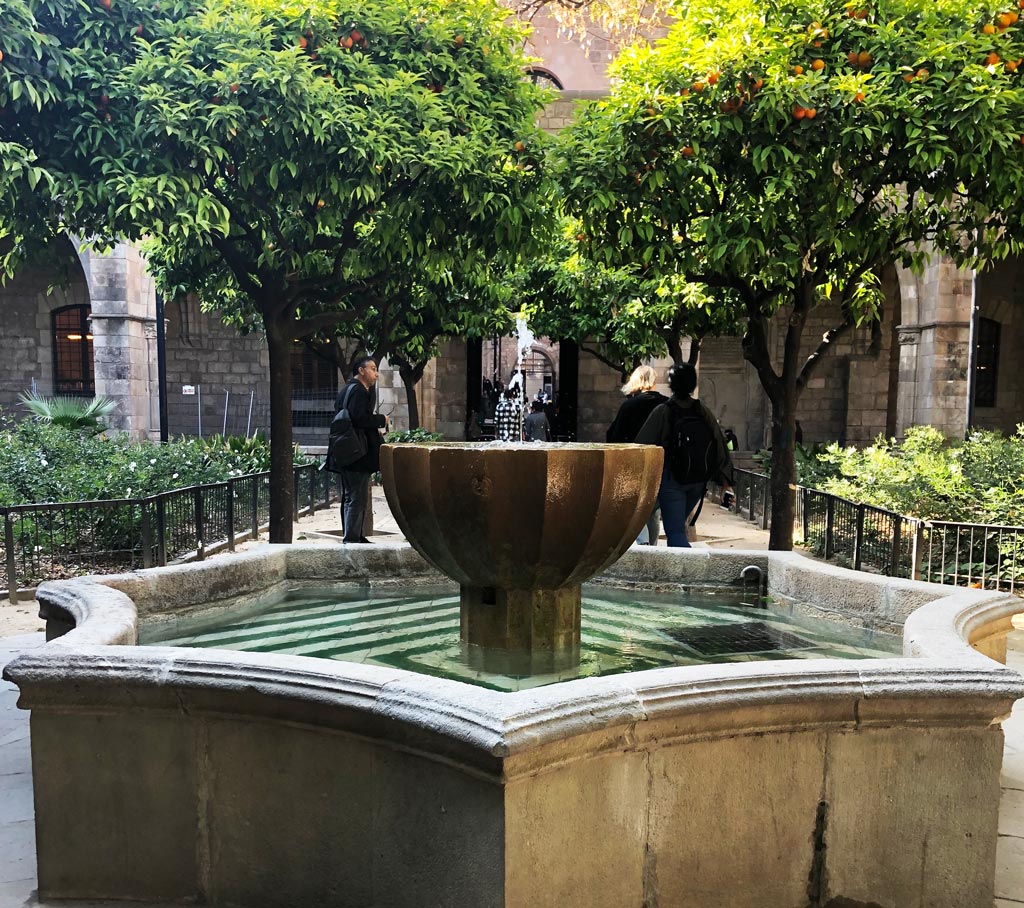
Find Jeanine on Instagram @lewildexplorer
22: Ponte de Carrer del Bisbe – Joan Rubió i Bellver
by Harshi and Aman of Trot.World

After another day of admiring the countless architectural marvels of Barcelona, it was finally time to stroll the streets of the Gothic quarter. Post a scrumptious brunch at the “Milk” (on Carrer d’en Gignàs) we were ready to explore some more streets within the quarter and made our way to Carrer del Bisbe. The tight & narrow cobbled alleys with sunlight penetrating through, in itself exude a magical charm. Unlike the other locations, hoards of tourists don’t really take away from the vibe but rather add to it. Countless awestruck eyes, whispering various legends about these streets, make it up for an experience rather than simply sightseeing.
Being in Carrer del Bisbe we had to check out El Pont Del Bisbe aka Bishop’s Bridge. Walking towards the bridge with the sound of the church bells in the background, having the feeling of being stared by gargoyles fixated above and around you, with sunlight peeking through the patterns of the bridge makes it quite an intriguing experience. But what truly attracted us towards this bridge were all the legends that surround it.
El Pont del Bisbe was designed by the architect Joan Rubió I Bellver who had several other of his plans rejected by the city authorities, except for this one. Dejected by the rejections, the disheartened architect incorporated something unique under the bridge, around which the several legends are formed, a skull with a pierced dagger.
A legend states that anyone who looks at this skull while walking under the bridge will be cursed with bad luck or an evil spell. Another talks about how the city of Barcelona will be destroyed if ever the dagger would be removed from the skull. There’s a third which we would like to just stick to since it’s the only one on a positive side, is that if you walk back under the bridge looking at the skull while wishing for something, it is likely to come true.
This remarkable sight oozing with detailed patterns and stories is always flocked with people and rightfully so, hence the best time to try your luck to get a good glimpse would be early in the morning. Nonetheless, with or without the crowd, this piece of architecture is a must-visit while in Barcelona.
Find Harshi and Aman on Instagram @trot.world
Recent Architecture of Barcelona
23: Barcelona Fish (Peix) – Frank Gehry
by Jennifer of World on a Whim
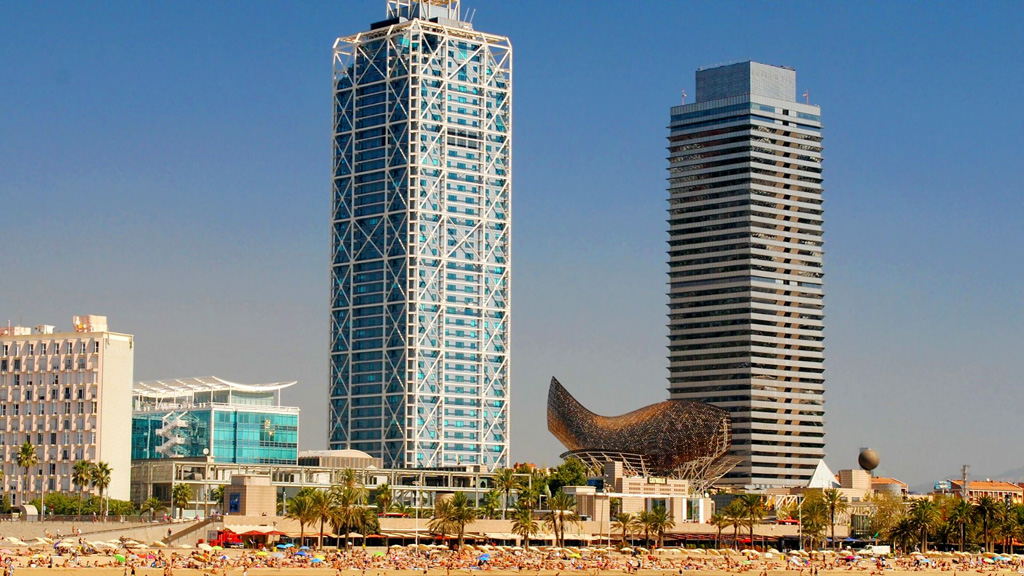
Barcelona Fish or The Peix (fish in Catalan) is a striking sculpture located on Barcelona’s seafront at Barceloneta beach. The landmark stands quite long at 52 meters and is made from gold-colored stainless steel that glistens in Barcelona’s sunny weather. Consequently, many have coined it “the goldfish.” This magnificent piece was built by Frank Gehry, the architect famous for many works throughout the globe including the Guggenheim Museum in Bilbao, Spain, and the Walt Disney Concert Hall in Los Angeles. He built the statue in preparation for the 1992 Summer Olympics in Barcelona.
The Barcelona Fish serves as a canopy for the Barcelona Casino linking the Hotel Arts to the promenade. I have stayed at the Hotel Arts and while it is a magnificent hotel, I generally recommend choosing accommodation in the Eixample neighborhood in my Spain Itinerary. Luckily, you don’t have to stay at this particular hotel to have a reason to get a glimpse of Gehry’s fish. Take the metro to Barceloneta before stopping at Can Paixano, a champagneria, for some cheap and delicious champagne and sandwiches. From there, it is just a 20-minute walk down the beautiful beachfront to The Peix.
I love that this particular architectural statue strikes such contrast to the Gaudi gems found throughout the city. Barcelona has a lot of range — mountains, beaches, city — and so do its architectural masterpieces which vary widely from Gaudi’s gothic and modernisme to Gehry’s deconstructivism.
Find Jennifer on Instagram @worldonawhimblog
24: The Barcelona Pavilion – Ludwig Mies van der Rohe
by Izzy & Philip of The Gap Decaders
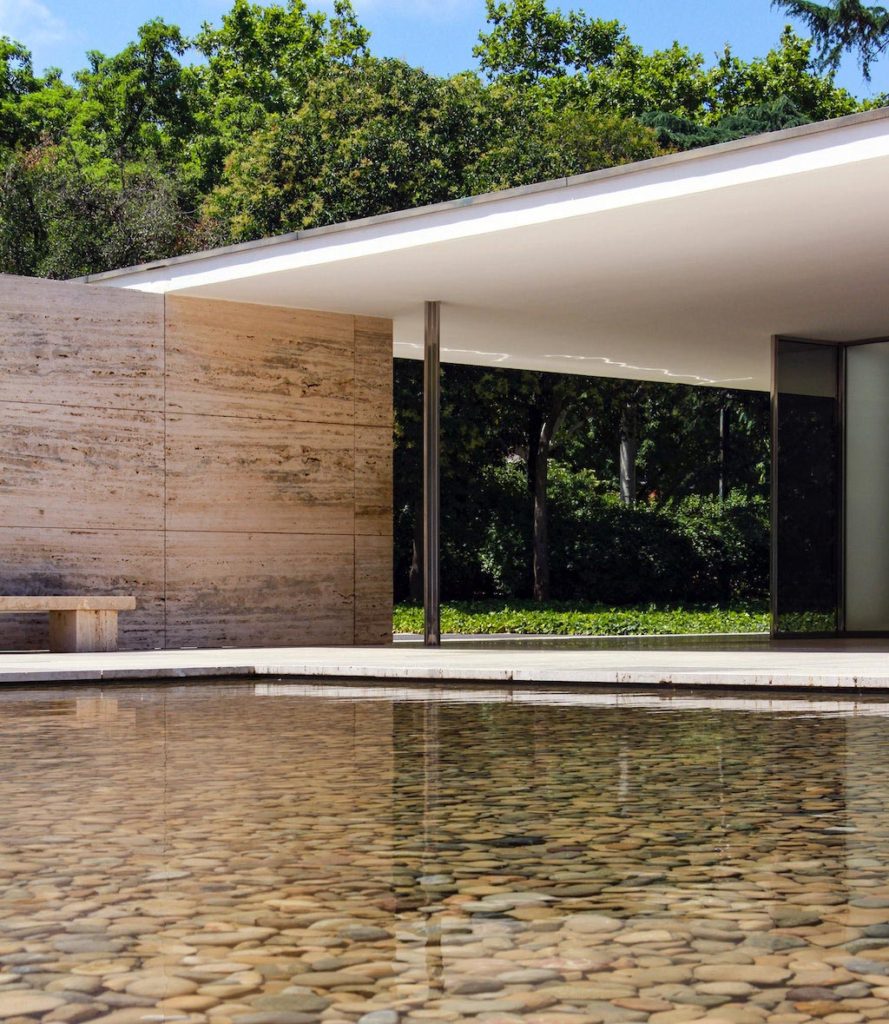
The Barcelona Pavilion – or El Pabellón de Barcelona in Spanish – is a gloriously simple and stylish building designed by the pioneering modernist architect Ludwig Mies van der Rohe and modernist designer Lilly Reich. The pavilion was built for the 1929 International Exposition in Barcelona and although being disassembled after the event, it was reconstructed from new but matching materials in 1986.
A wonderful antidote to the Gothic cathedral architecture and that of Gaudi, the pavilion is an icon of early 20th-century design and a must-see if you’re touring Spain or Barcelona. We spent an hour decided how we would furnish the pavilion if we lived there!
Built from glass, steel, and four kinds of marble, the pavilion is sharp and contemporary in finish; it has aged well and feels as relevant today as it must have done in the Barcelona of the roaring twenties. The couple also designed the Barcelona Chair for the pavilion, a chair so iconic that it is still manufactured and sold today.
Visit the pavilion and you’ll find shade from the enormous cantilevered overhang, a calming pool, and cool interiors, perfect for the relentless Spanish heat. Go early (open 10 am to 8 pm most days) and you’ll have the place to yourself. To get there, take the metro to Espana and head up Avenia Reina Maria Cristina towards Barcelona Palace, the pavilion is on your right. Most of the tourist sightseeing buses have a stop there as well.
Find Izzy and Philip on Facebook @gapdecaders
25: Torre Agbar (Torre Glòries) – Jean Nouvel
by Fuad Bin Omar of A Walk in the World
When sports enthusiasts think of Barcelona, Lionel Messi is the first name that pop up in their mind. They’ll never miss a football/soccer game with Lionel Messi. Likewise, every other visitor will hear the name “Anthony Gaudi” in Barcelona. Such is the influence of this architect and designer on Barcelona. So, when you see a building shaped like a suppository in the Barcelona skyline, you might think of it as yes another on of Gaudi’s creation and if you do, you’ll be wrong! The tower is called Torre Glòries.
Torre Glòries is one of the few famous landmarks in Barcelona not designed by Antoni Gaudí. It’s not even designed by a Spaniard!. A French architect named Jean Nouvel designed Torre Glòries. He drew the design inspiration of Glòries from Montserrat, the famous monastery town in Barcelona. It is also strongly influence La Sagrada Familia‘s Bell tower and Torre Glòries north side is designed to get the best views of the La Sagrada Familia.
When King Juan Carlos I inaugurated the tower 15 years ago, it was named was Torre Agbar, after the Agbar group that owned the building. Over time, as the company and tower’s ownership changed, so did the tower’s name. Now Torre Glòries is named after the adjacent square.
Torre Glòries is the third tallest landmark in Barcelona with 38 storeys (including the underground floors), after the Arts Hotel and the Mapfre Tower. When Sagra De Familia is completed as planned, Torre Glòries will lose its glory as the 3rd tallest structure. Torre Glòries is best seen from the hill of Park Guell as part of the panoramic view of the city. When you will get closer to it, you’ll notice, that it is lined with glass windows in the concrete structure. If you have the patience to count them, you’ll end up with a number of over 4500 windows!
A distinctive characteristic of the Torre Glòries is the automatically controlled window shutters. The tower has some 4500 sensors that control the shutters based to the real-time temperature. What an amazing environmentally feature for comfort and for saving the energy bill from air-conditioning .
Torre Glòries has become a popular tourist destination in Barcelona over the brief span of 15 years. A visit to this key Barcelona landmark and the high-tech part of Barcelona should be at top of your to-do list in Barcelona. In addition to the mind-blowing landmarks of Barcelona, I recommend the mountains and beaches of Spain. My favorite are day trips to Montseny and coastal towns of Spain.
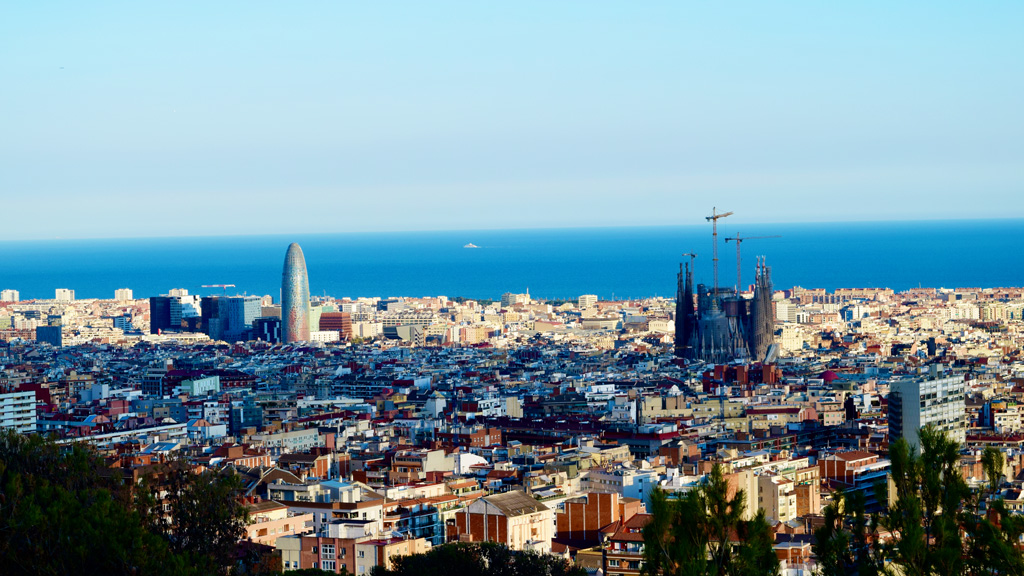
Find Fuad on Pinterest at awalkintheworld.
Eixample’s City Layout
As we walked along the fascinating checkerboard streets of Eixample, each building had a unique facade lined by clique boutiques, famous houses, flower shops and gourmet restaurants. But, perhaps the most important architectural brilliance of Barcelona is the city design itself. Eixample neighborhood’s layout in perfect blocks was the city planners foresight, unlike any other. The entire 22.8 square miles is a grid with a diagonal street passing through the prime city center. Each block looks like a square with corners chopped off so geometrically speaking, each block is an octagon and so is each intersection. The unusual octagon intersections have huge benefits – it allows more light and air through the blocks. Its easier for parking, street crossing and visual esthetic.
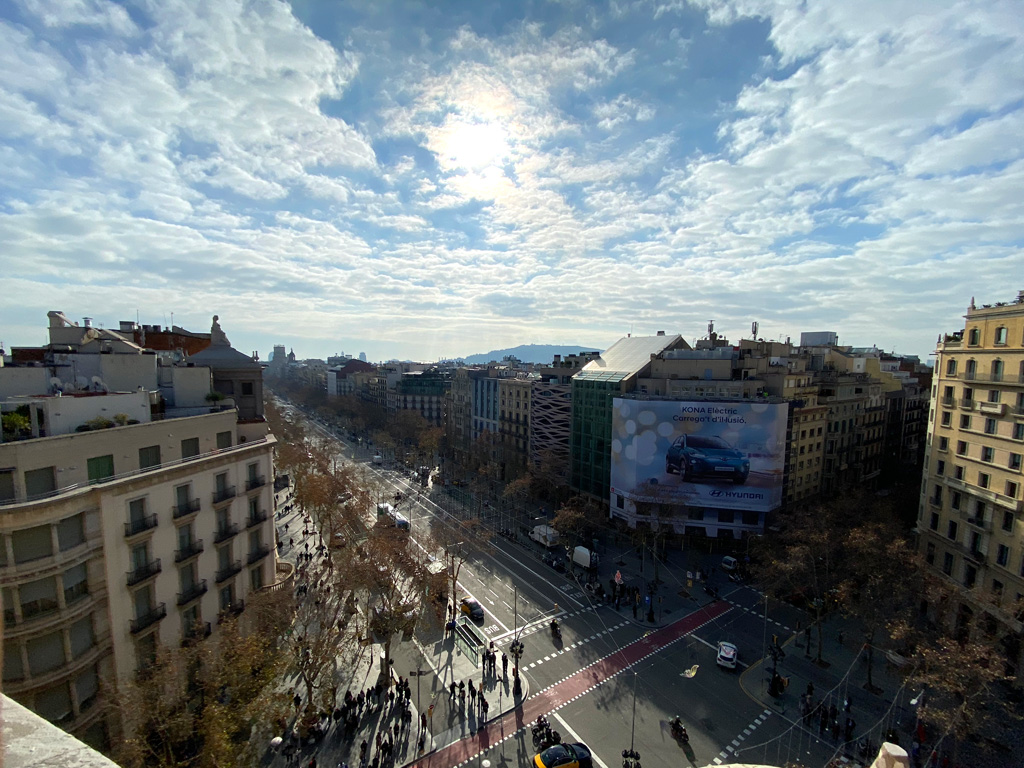
Each block is quite large and designed so the perimeter has businesses on the ground floor with apartments above, each with its ornate balcony. Most blocks have a church, food market, playground and a community feel. In the recent years there is a movement to stop vehicle traffic on certain streets and make mega pedestrian blocks. It has been implemented in some areas and definitely brings families and communities together.
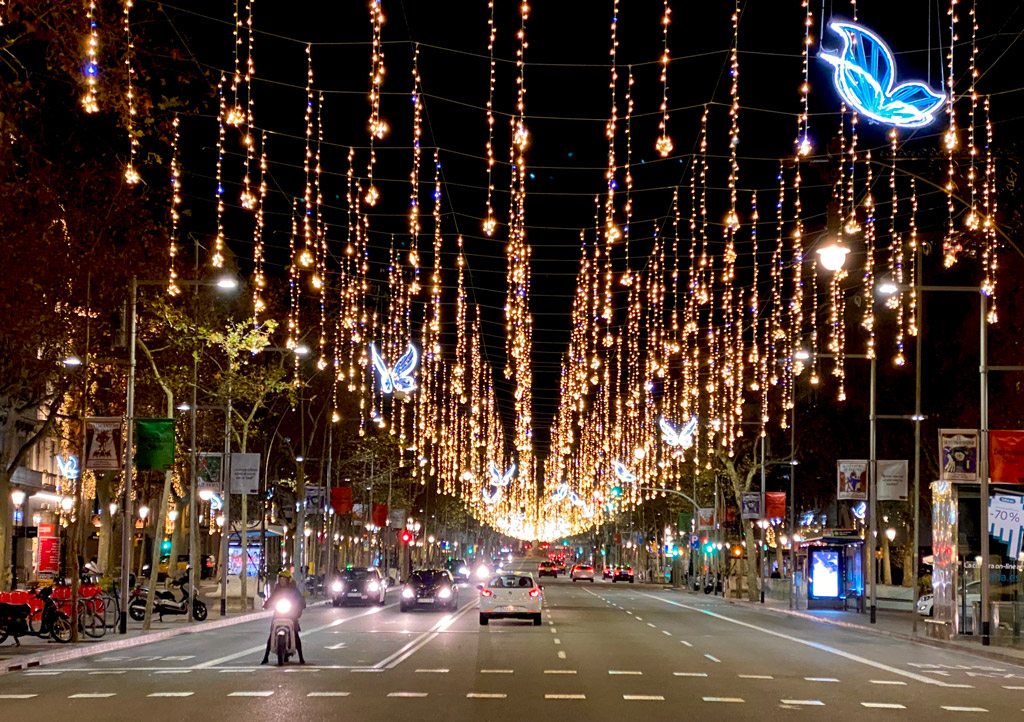
The buildings at the octagonal intersections were particularly beautiful.. Here are a few examples.
More Monuments to Visit in Barcelona
Besides these 23 gorgeous structures in Barcelona there are dozens more amazing ones we must visit. Here are a few more I would like to explore.
- Museu del Modernisme Català – Museum of the catalan art nouveau
- CaixaForum – modernist textile factory
- Herzog & de Meuron’s Forum Building
Have you visited other structures in Barcelona? If so, please do share your story.
More of Our Articles from Barcelona
- La Sagrada Familia in photos
- Gaudi’s Park Güell in photos
- Casa Míla (La Pedrera) virtual tour
- All about Hospital de Sant Pau
- Eat like a local in Barcelona (vegan or vegetarian)
- All about Pintxos and where to find them in Barcelona
- Photos gallery of Madrid, Spain

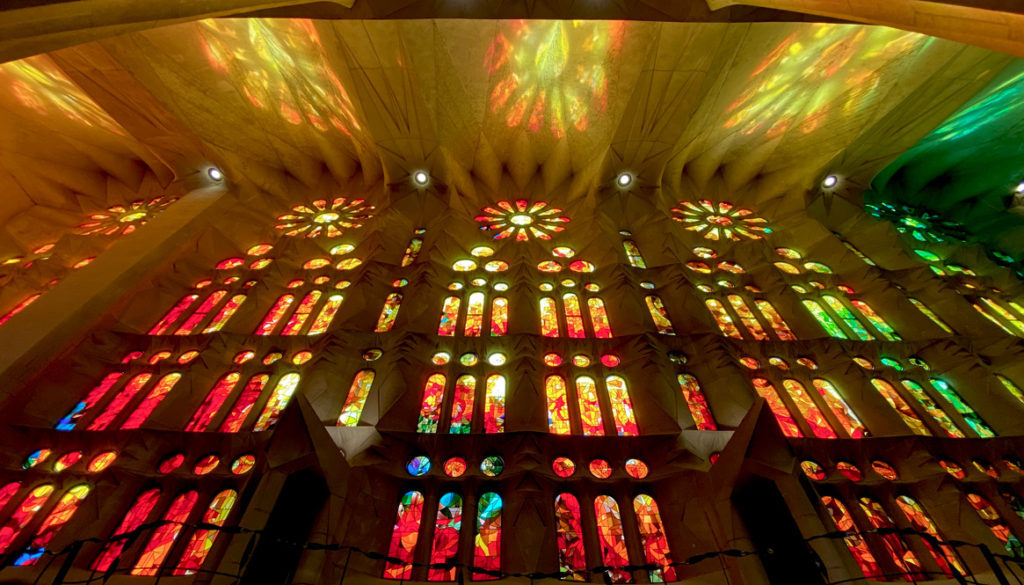
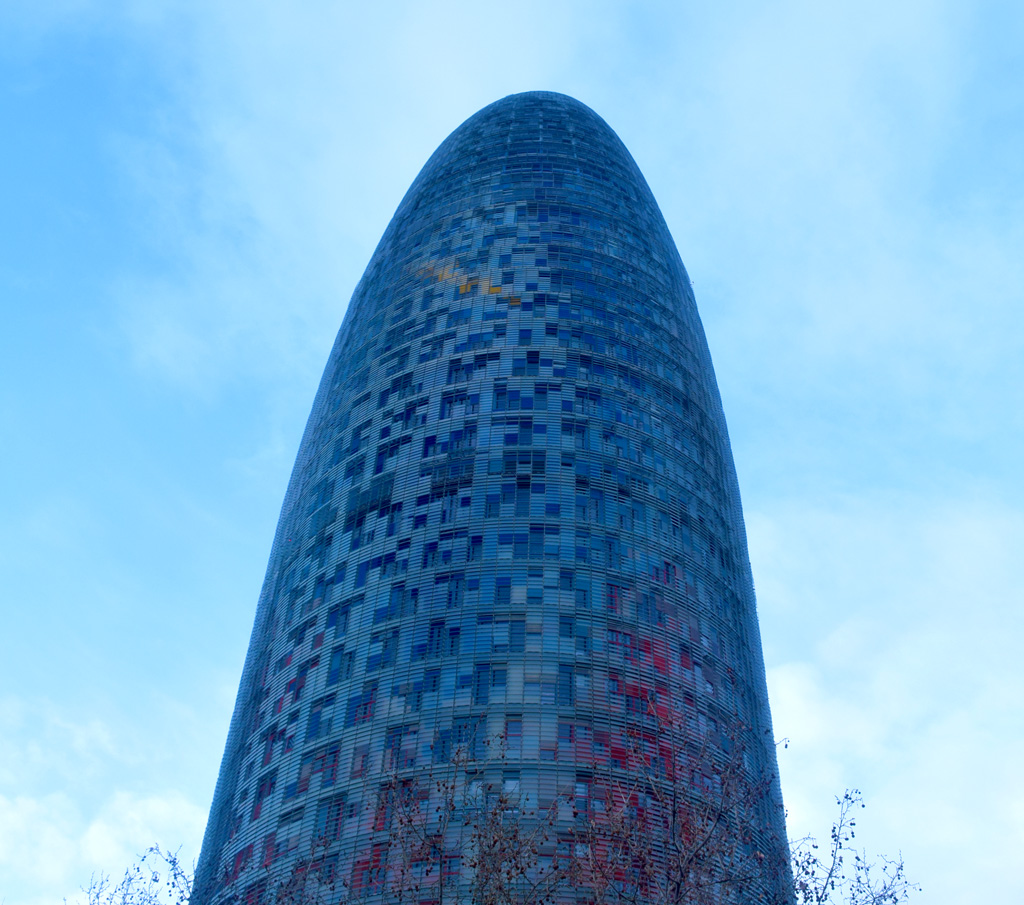
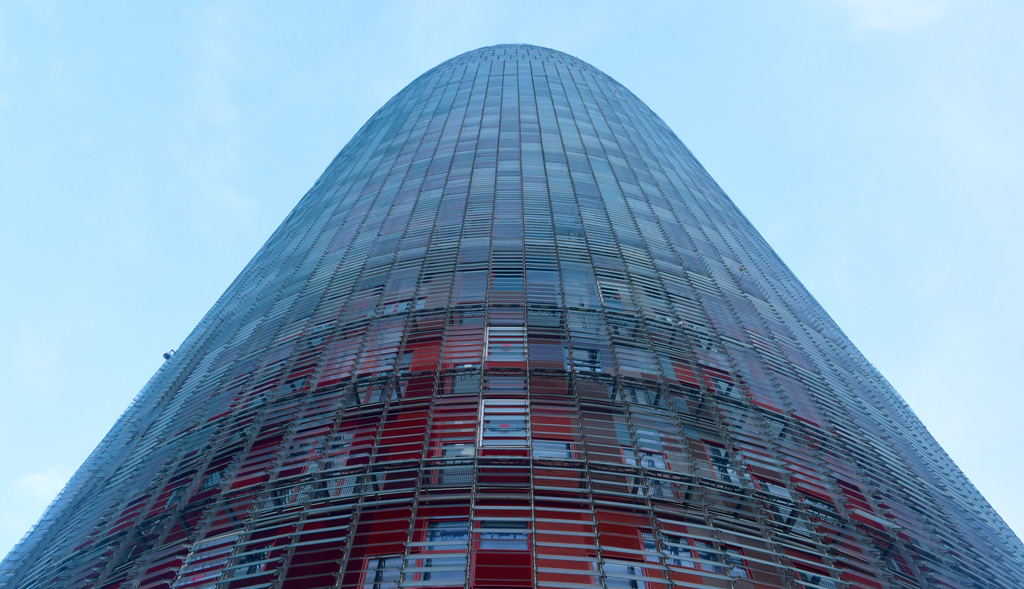
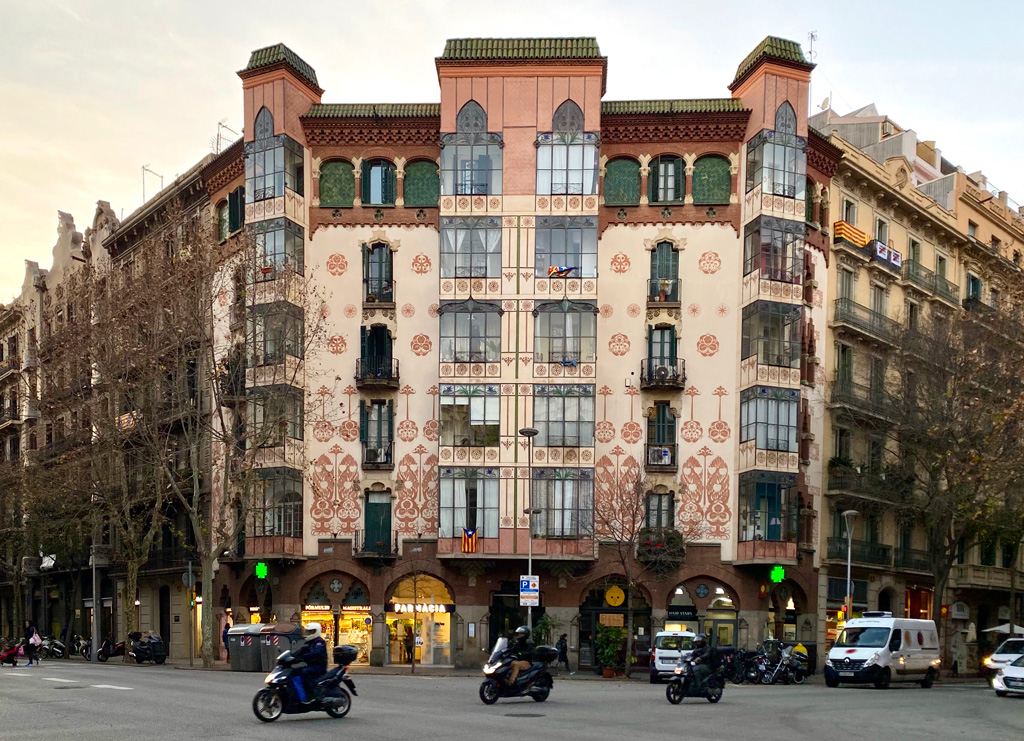
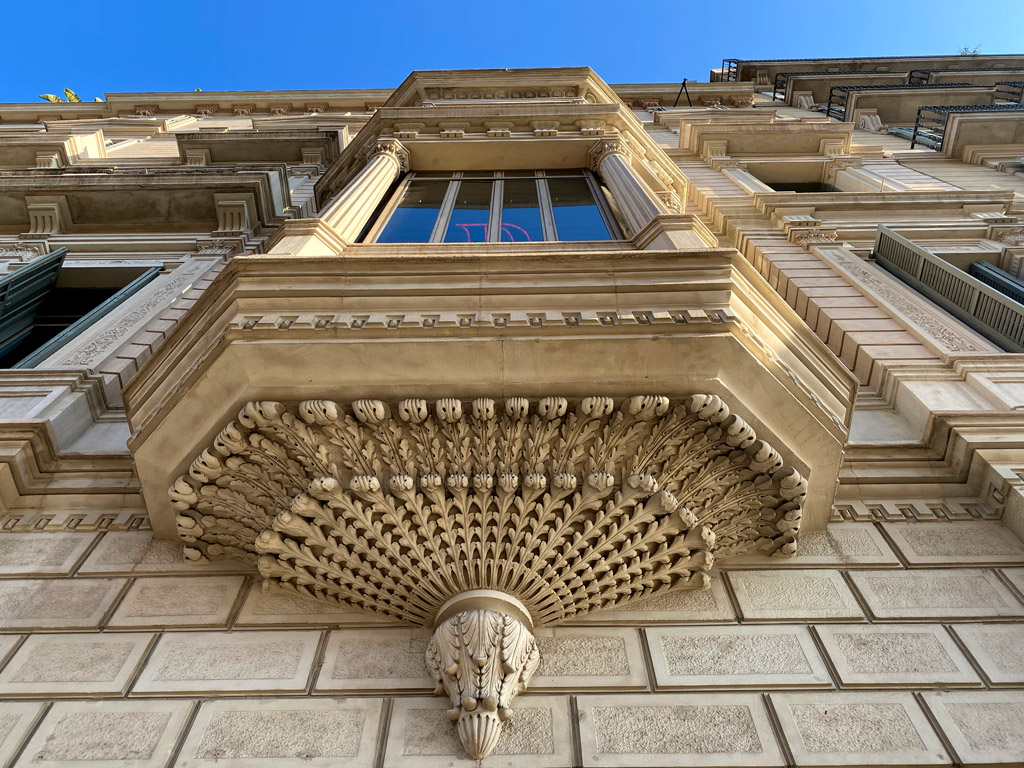
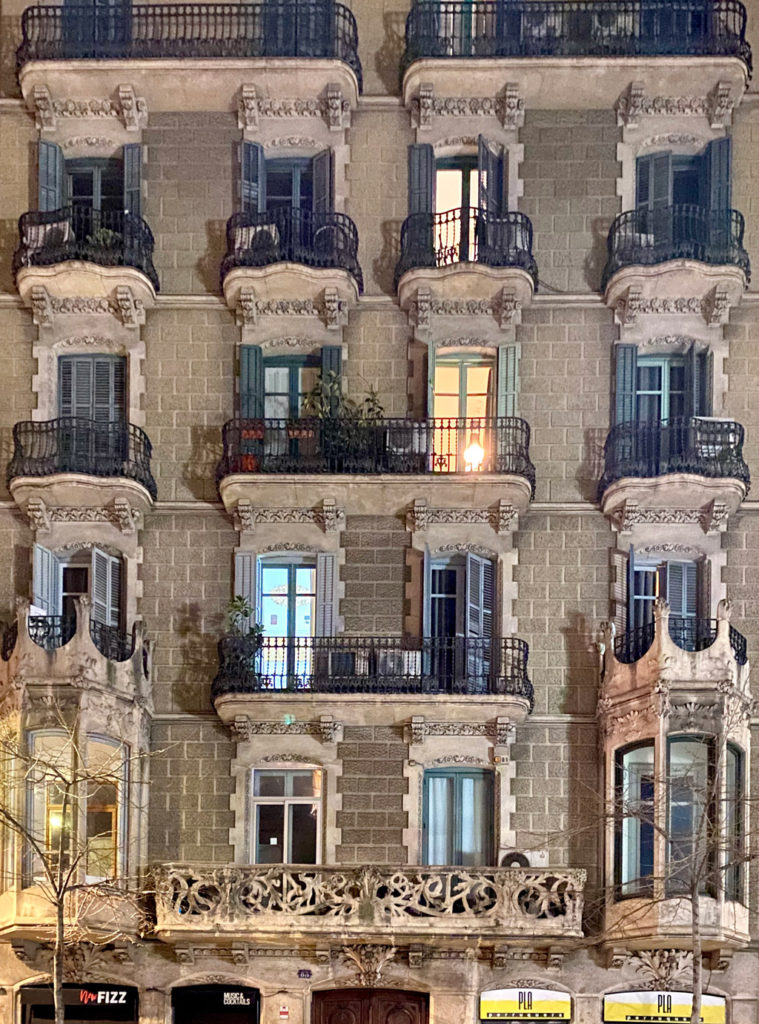
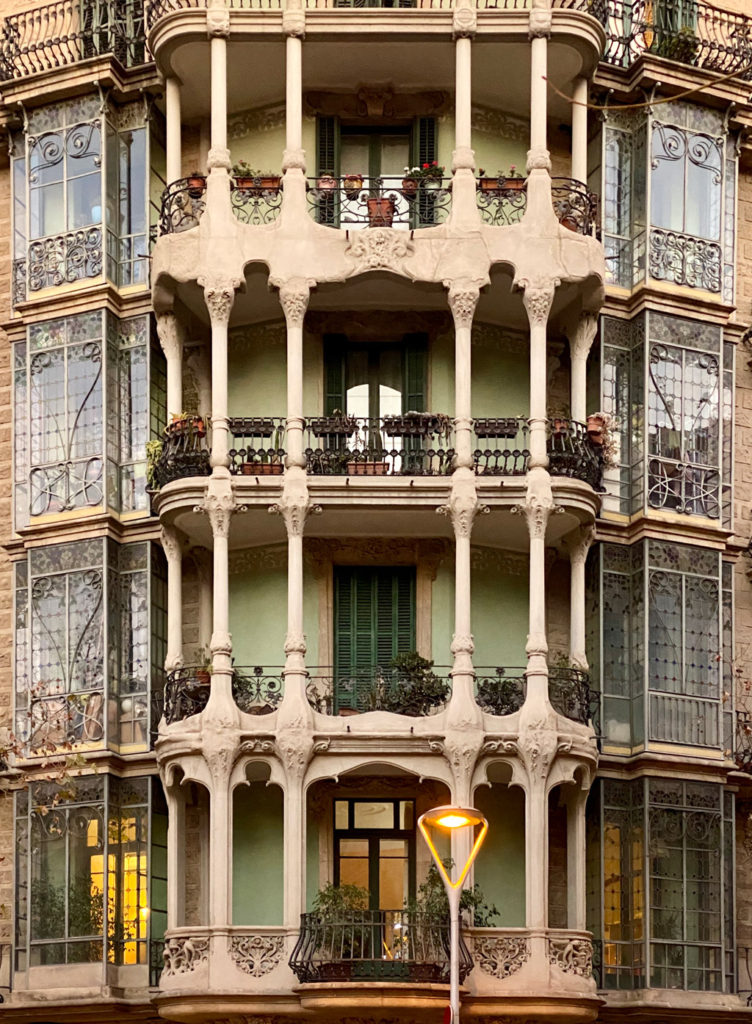
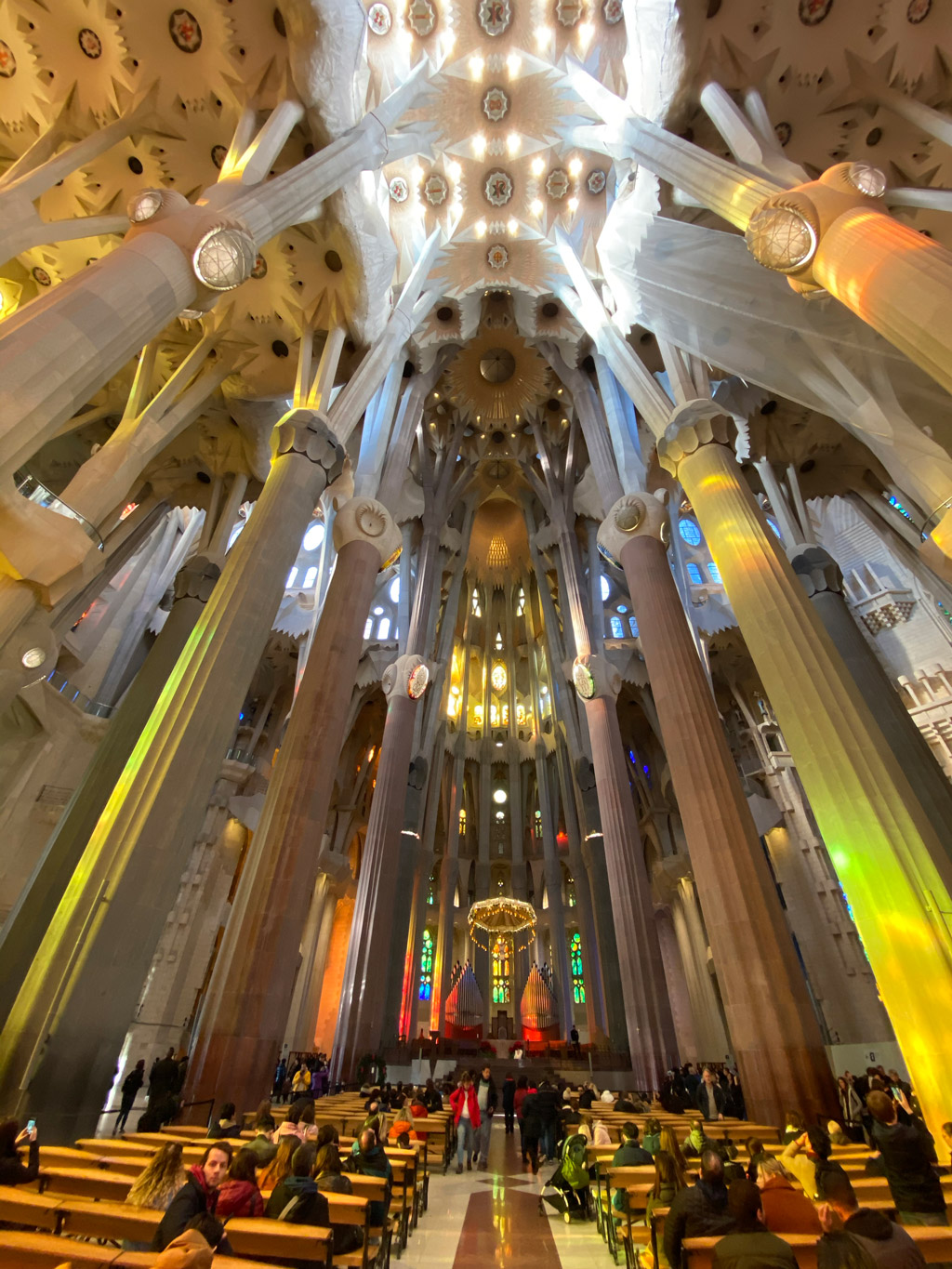




Colorado Springs Fires Brings Community Together
October 10, 2020 @ 9:16 am
Hello! I’m at work browsing your blog from my new iphone 3gs!
Just wanted to say I love reading through your blog and look forward to all your posts!
Carry on the outstanding work!
Sinjana
December 26, 2020 @ 8:33 pm
This is an amazing post about the incredible architecture of Barcelona. It’s my favorite city so far in Europe and I long to visit the city again. The pictures are so beautiful.
Anita
December 28, 2020 @ 10:21 am
I just love Barcelona. Reading your post I just see that there are many places in this stunning city I still have to visit. Thanks for the awesome list and future travel inspiration!
Sue
December 30, 2020 @ 3:49 am
Great post! I have visited Barcelona numerous times but not for many years. I’ve seen a few of these but wasn’t aware of all the stories & the sheer number of impressive buildings, structures & parks in the city. I fund La Sagrada Familia fascinating. It’s so unusual to see a building like this that is still under construction. I will definitely come back to this next time I am heading to Barcelona. Thanks for compiling!